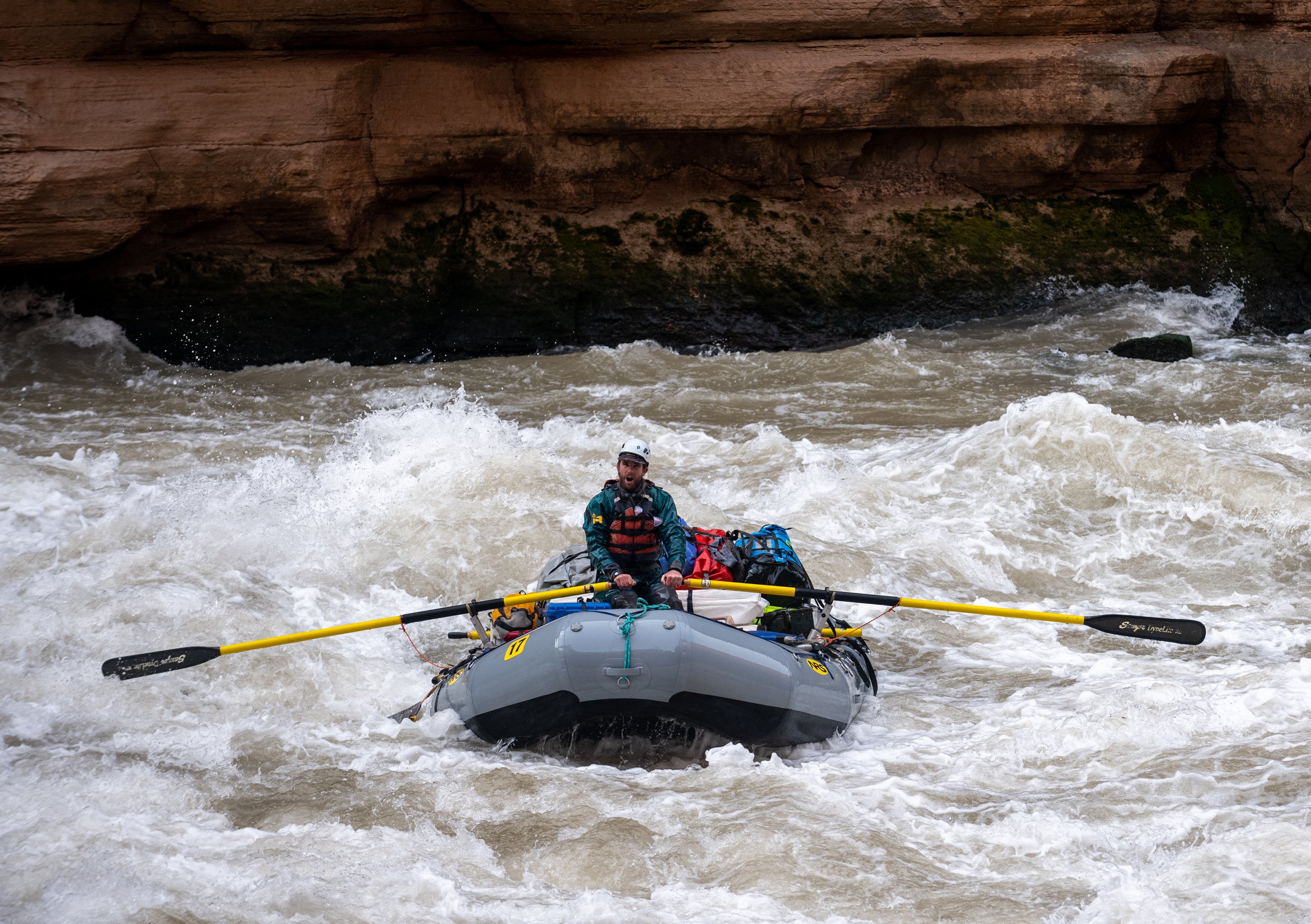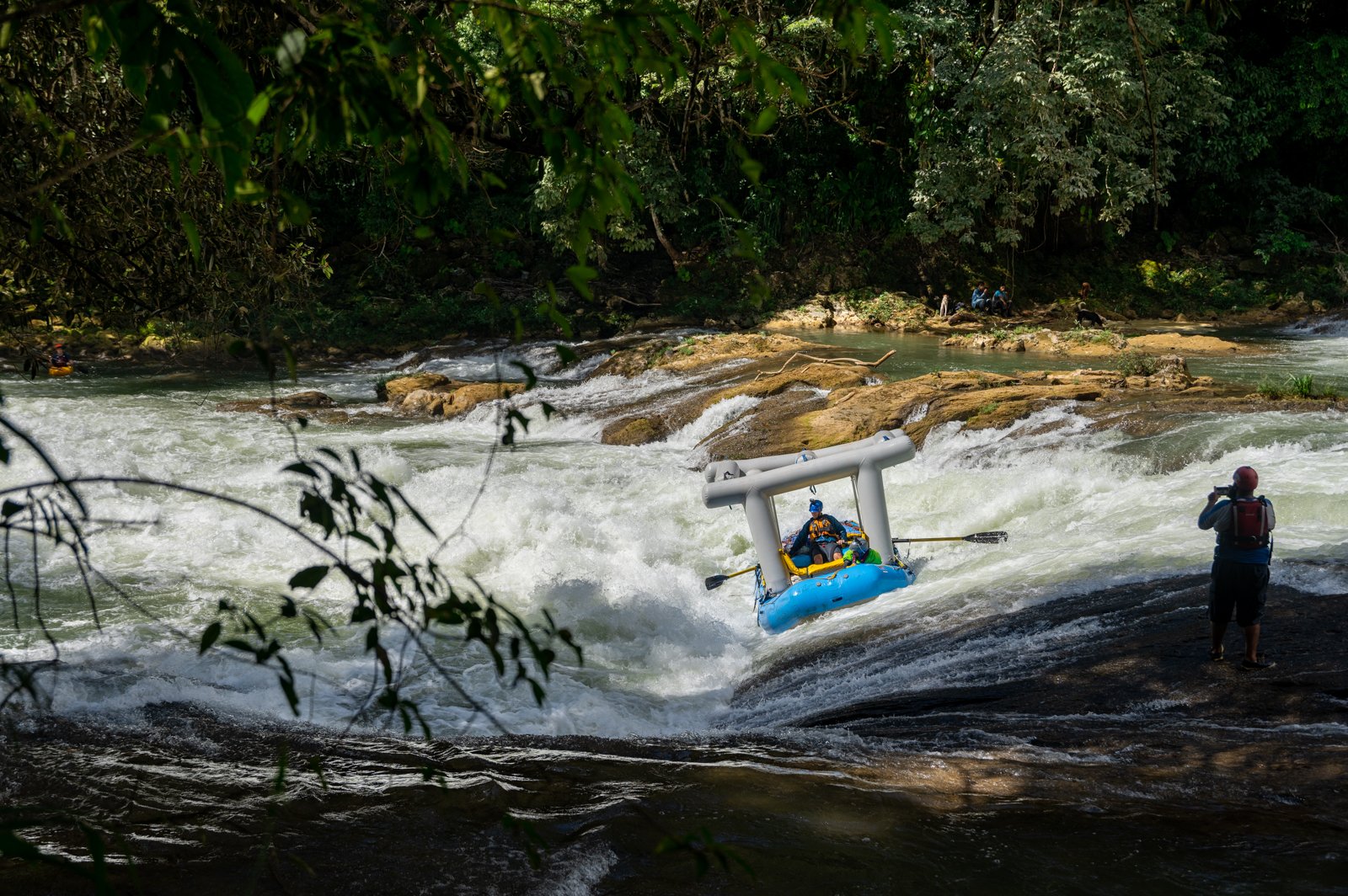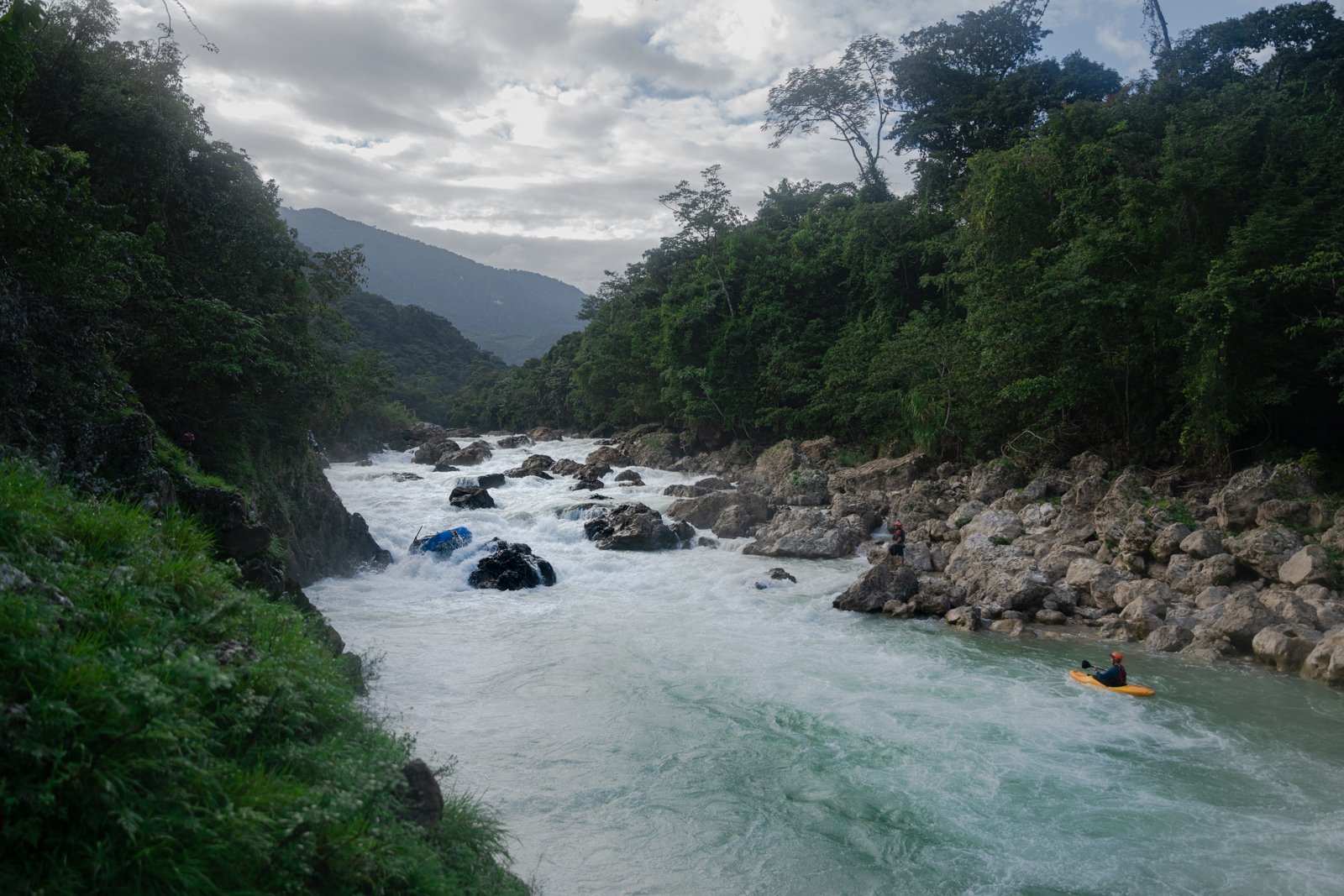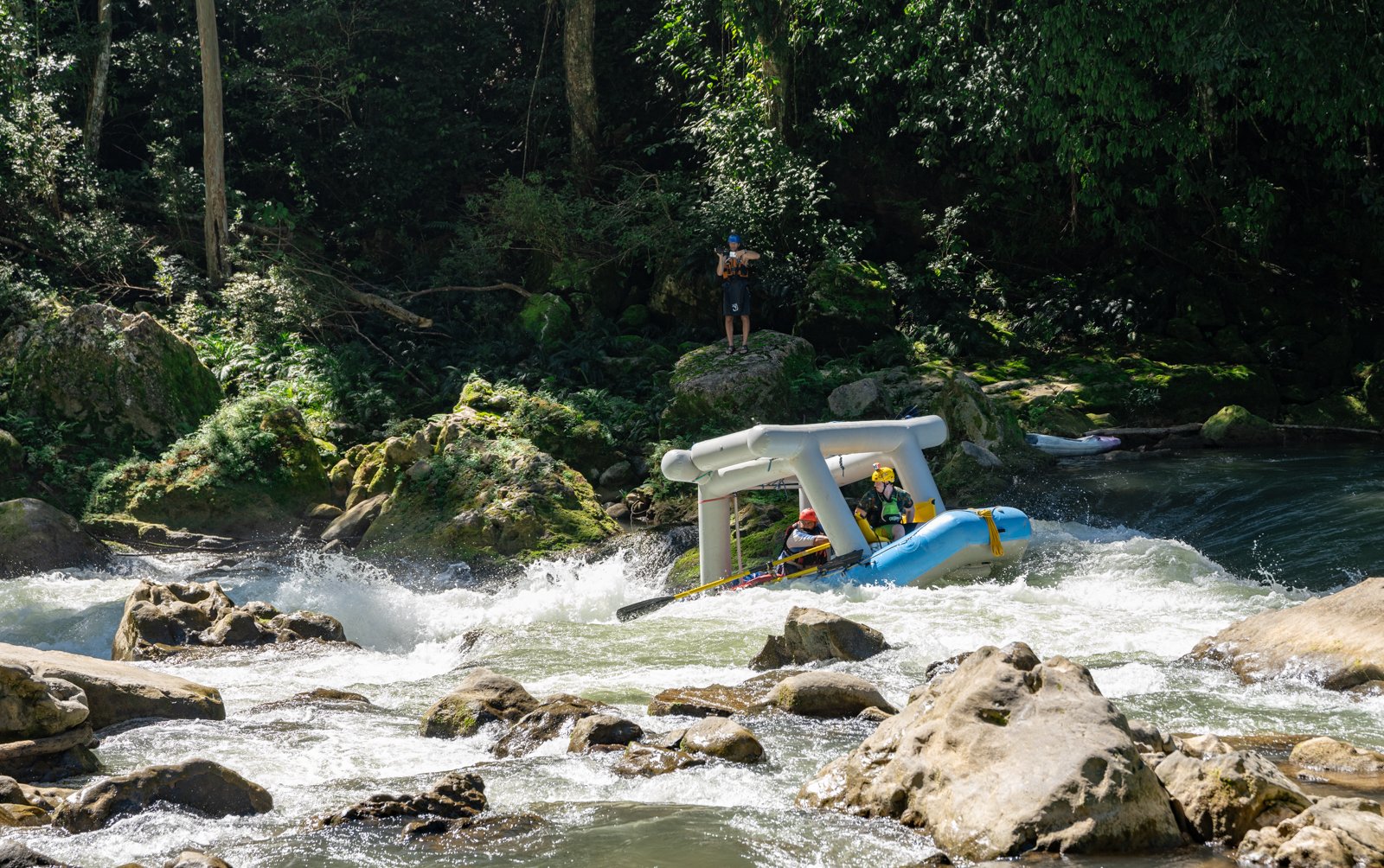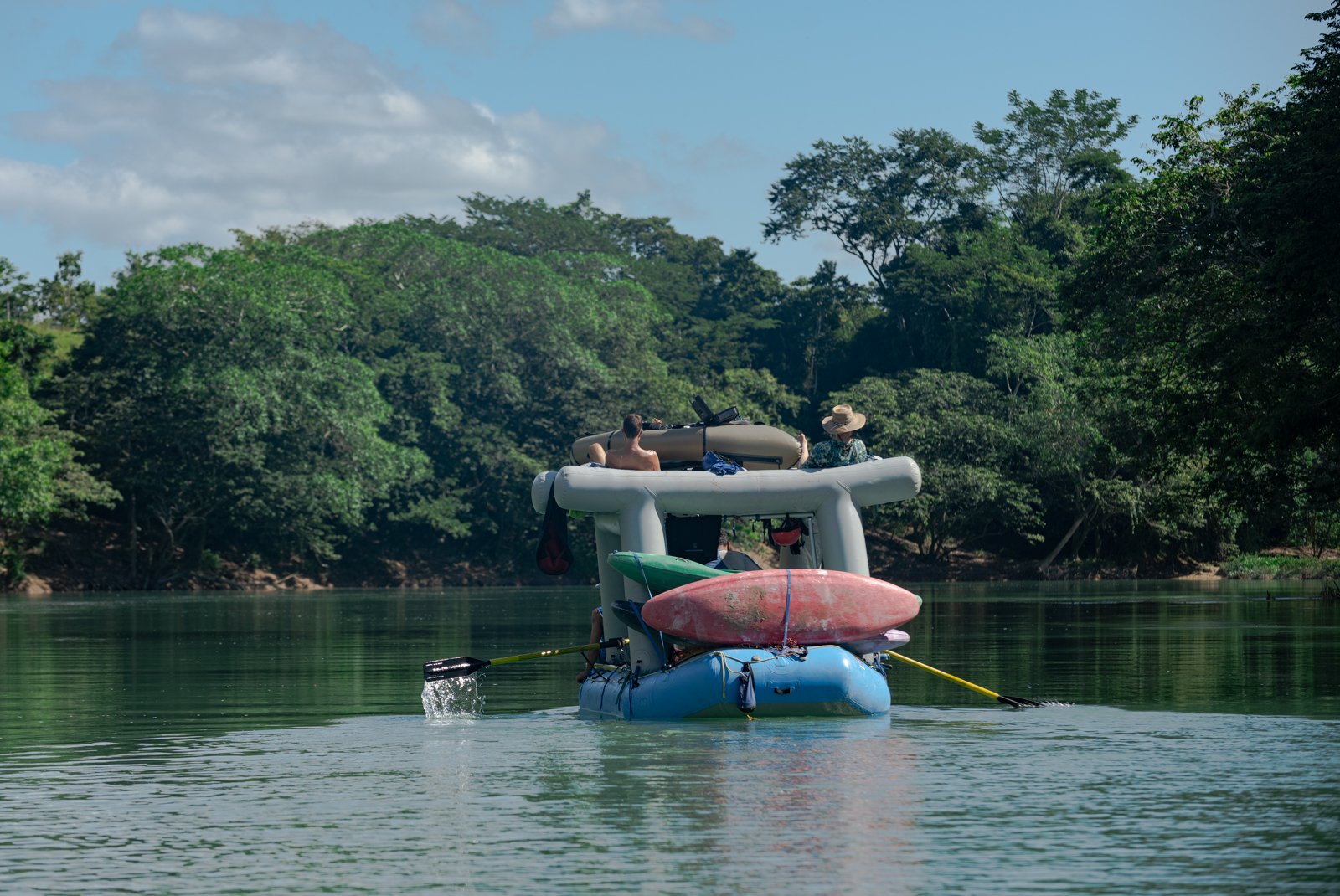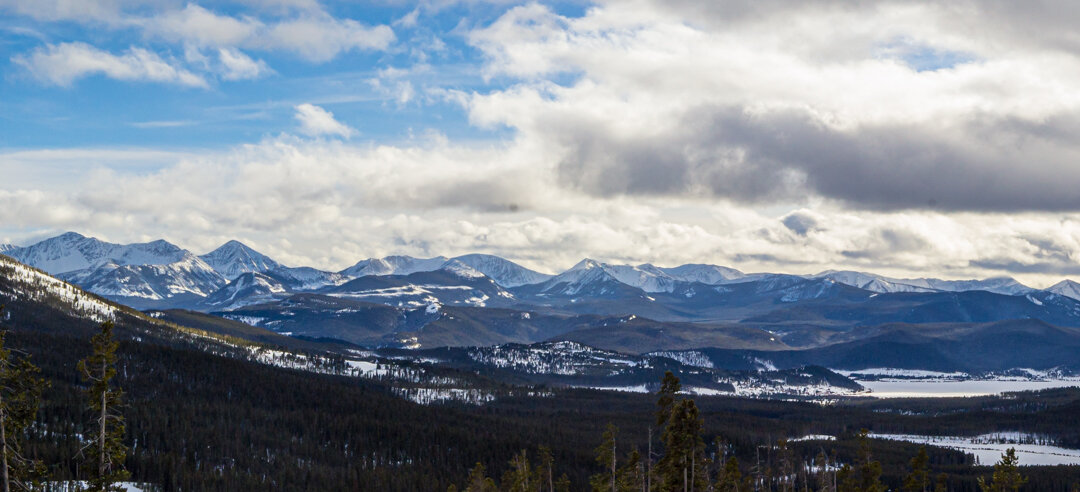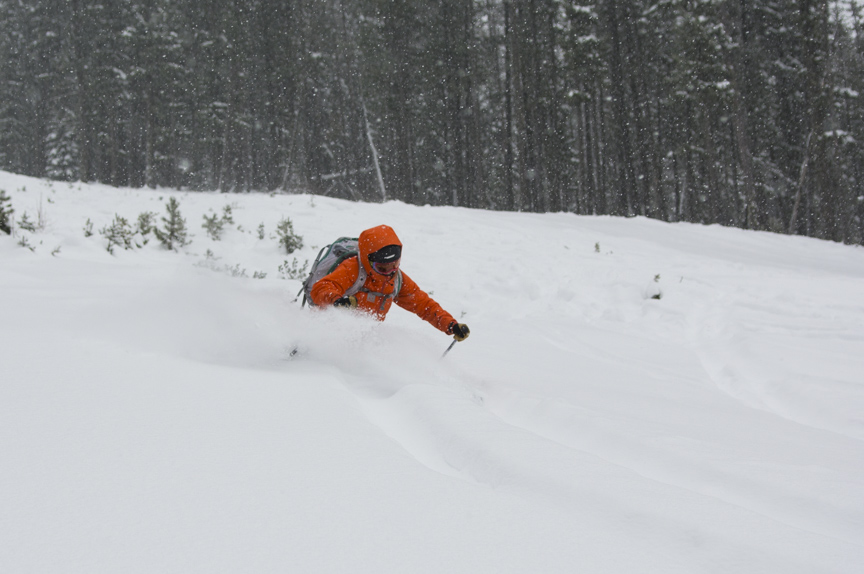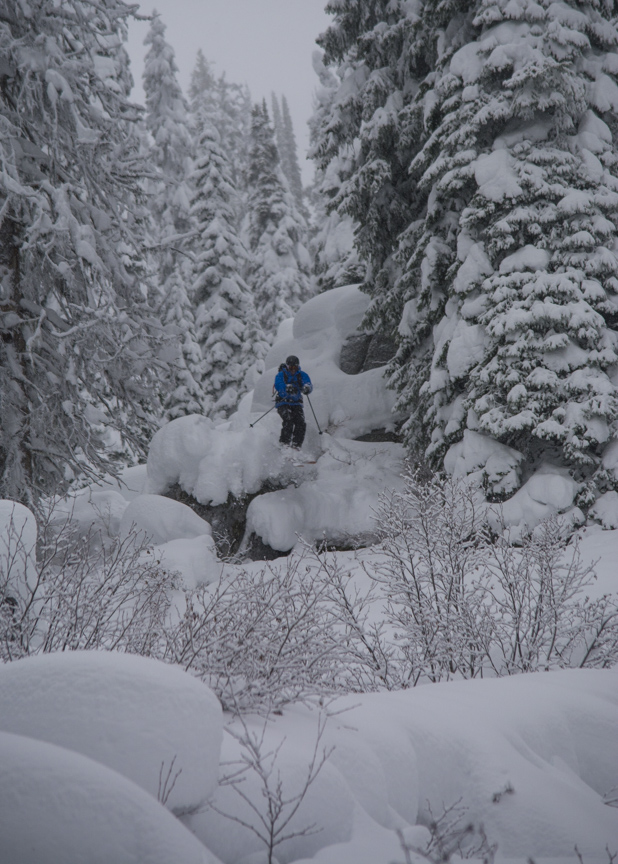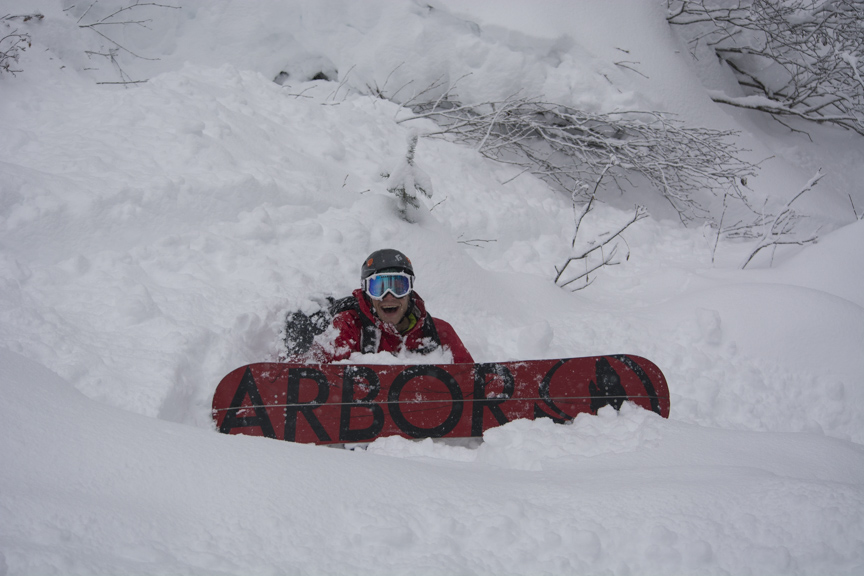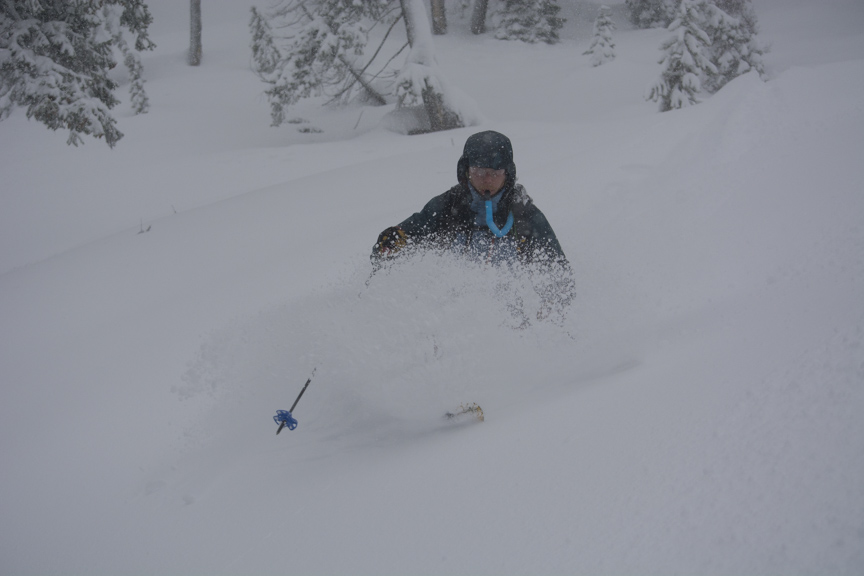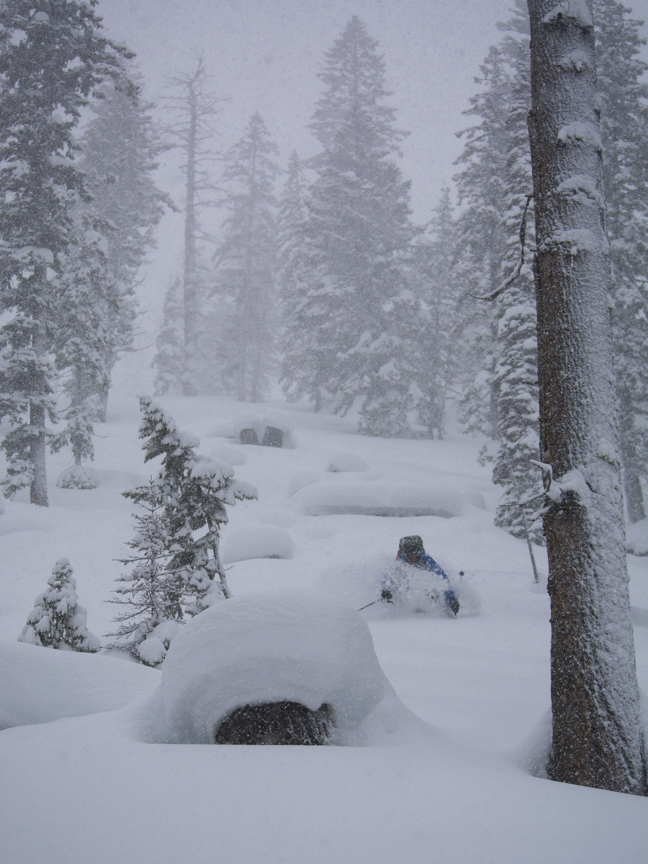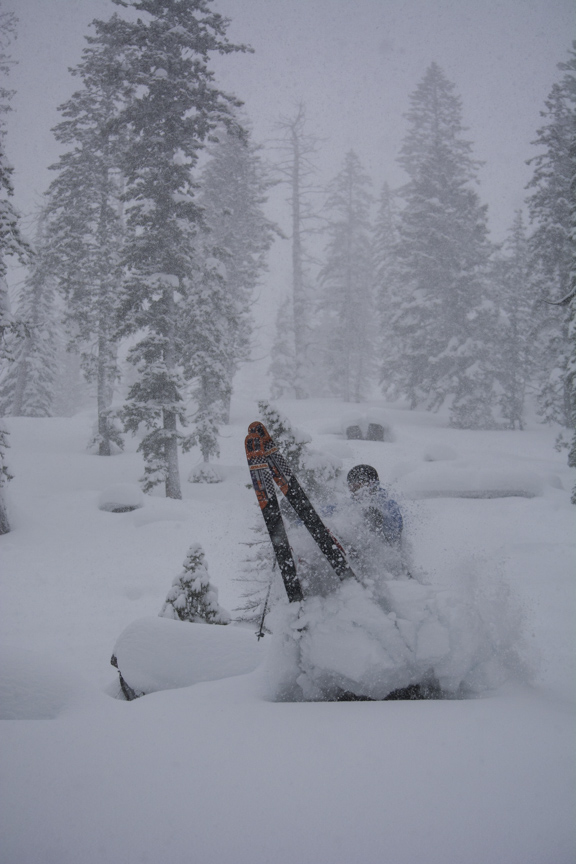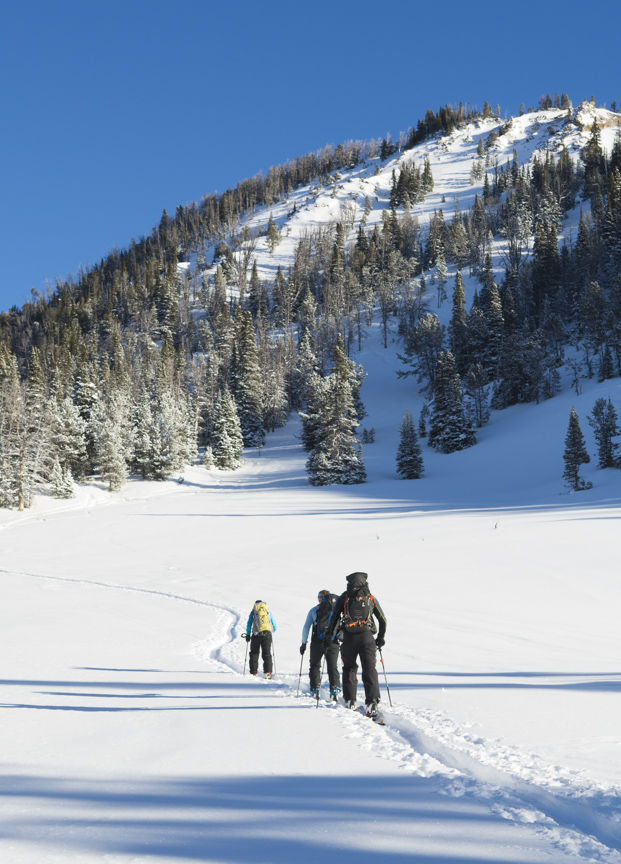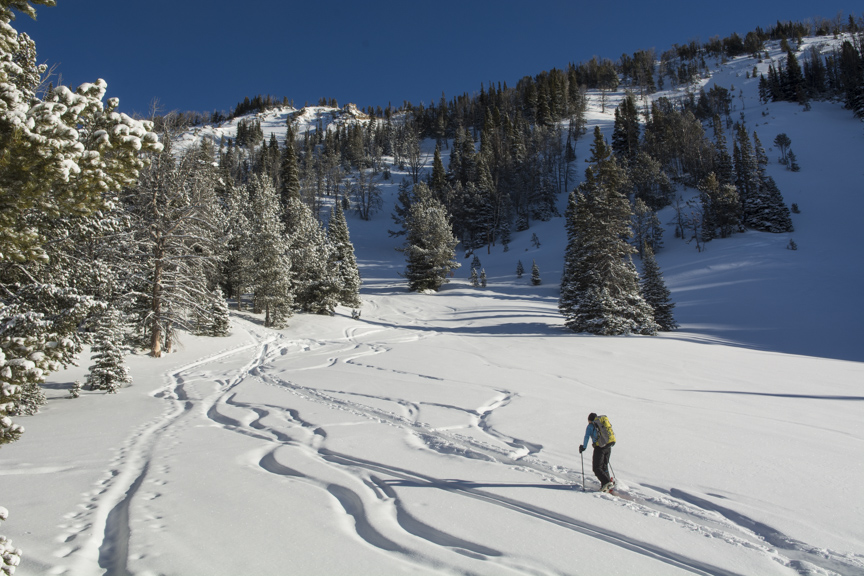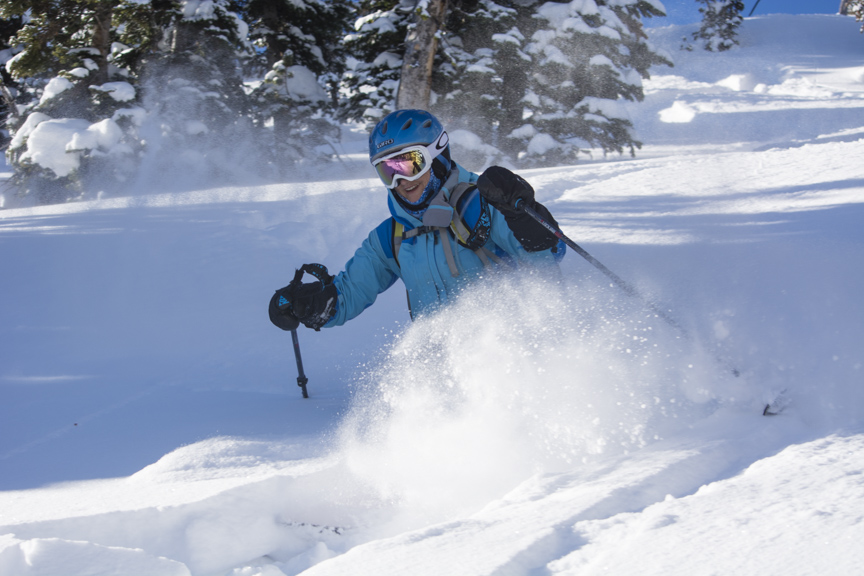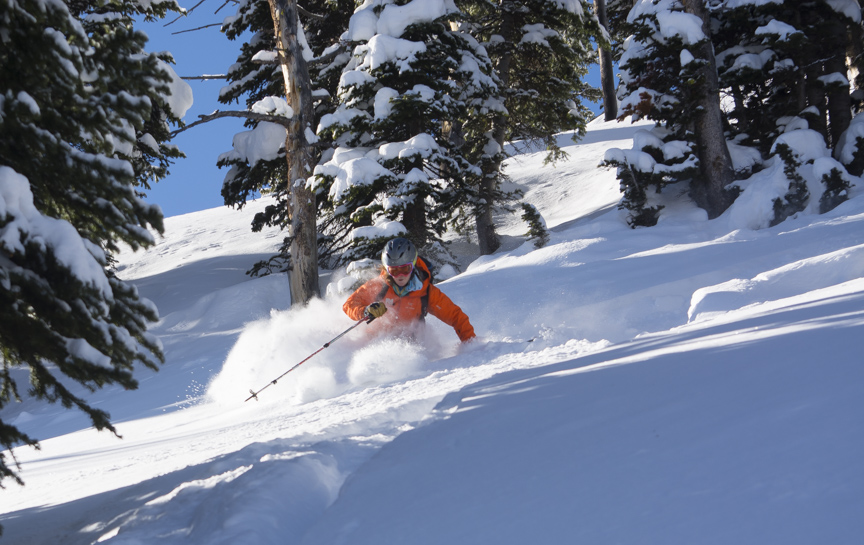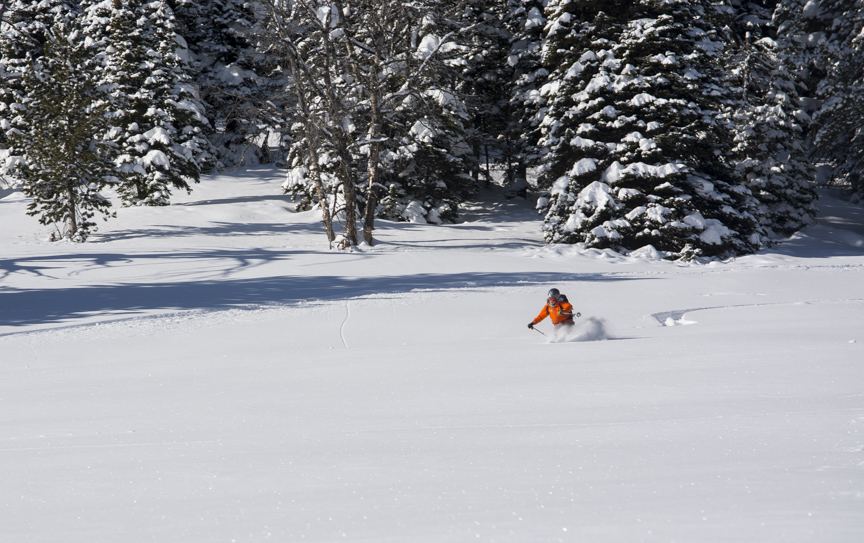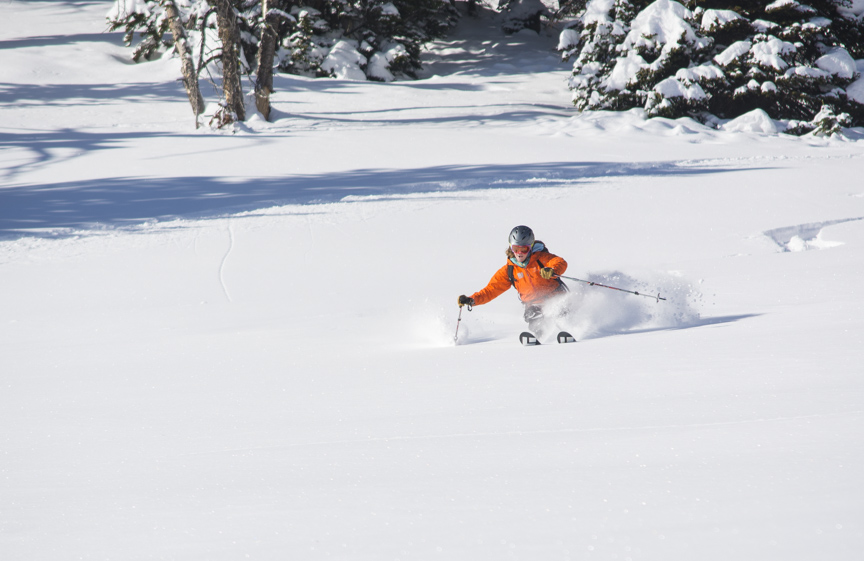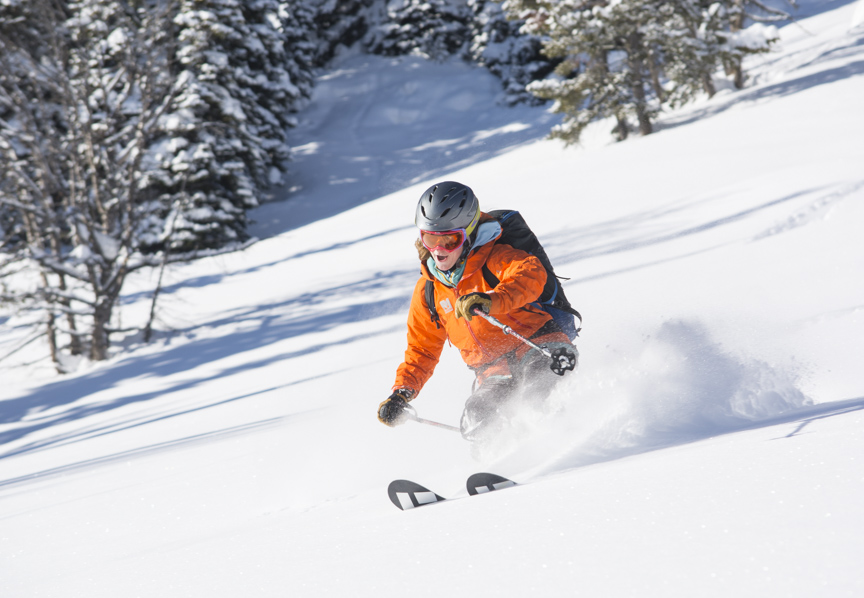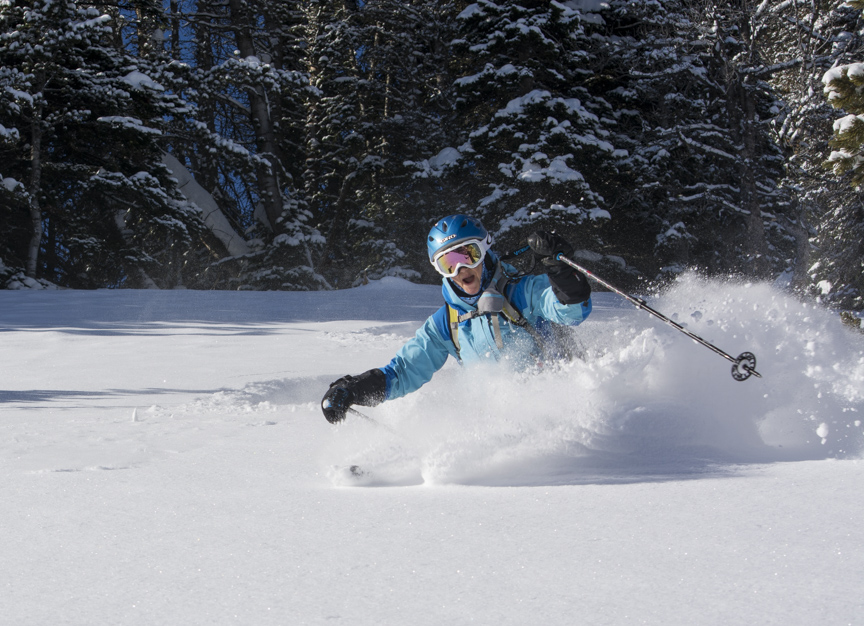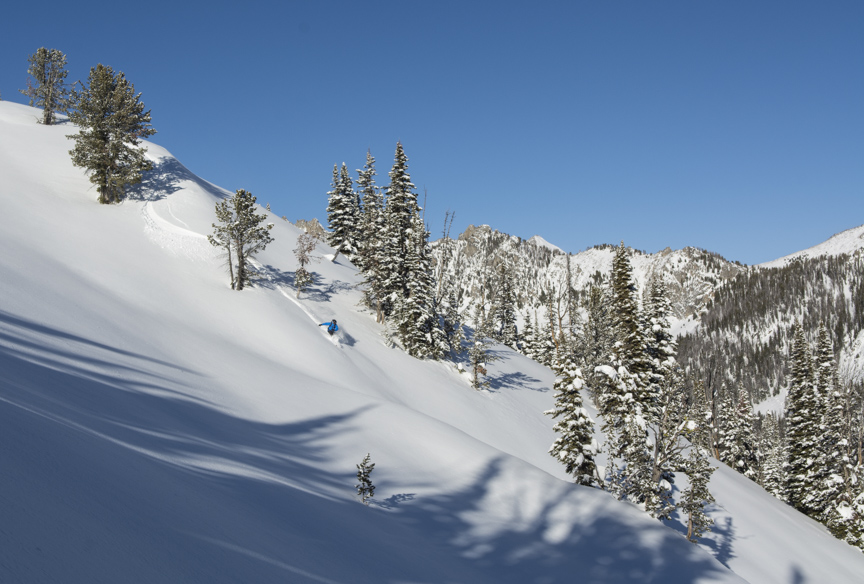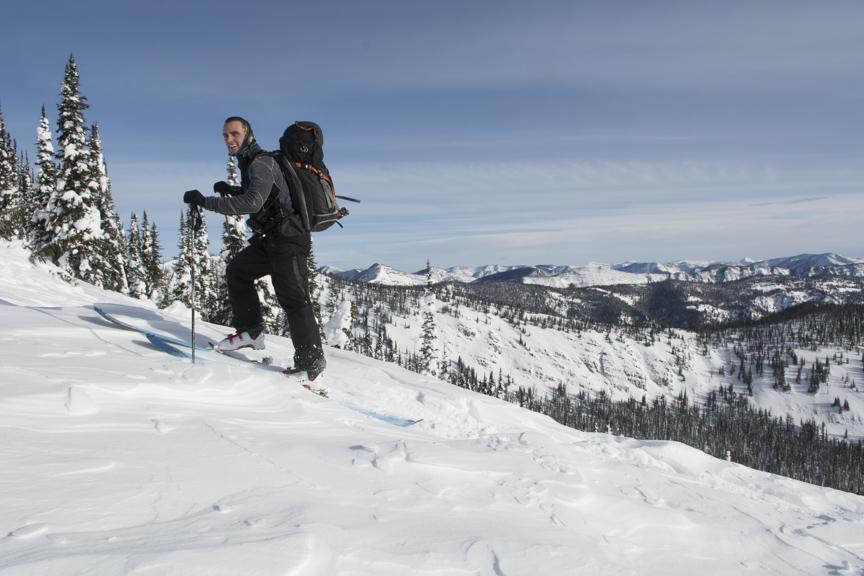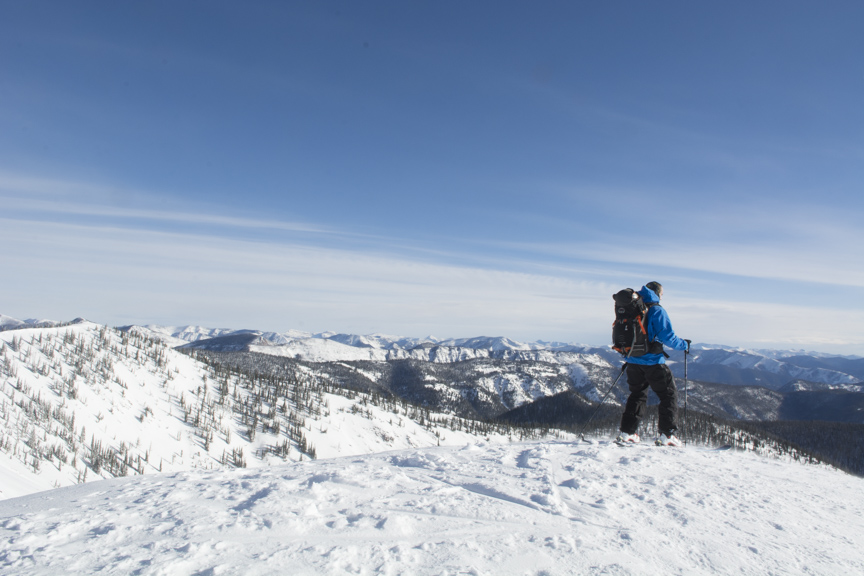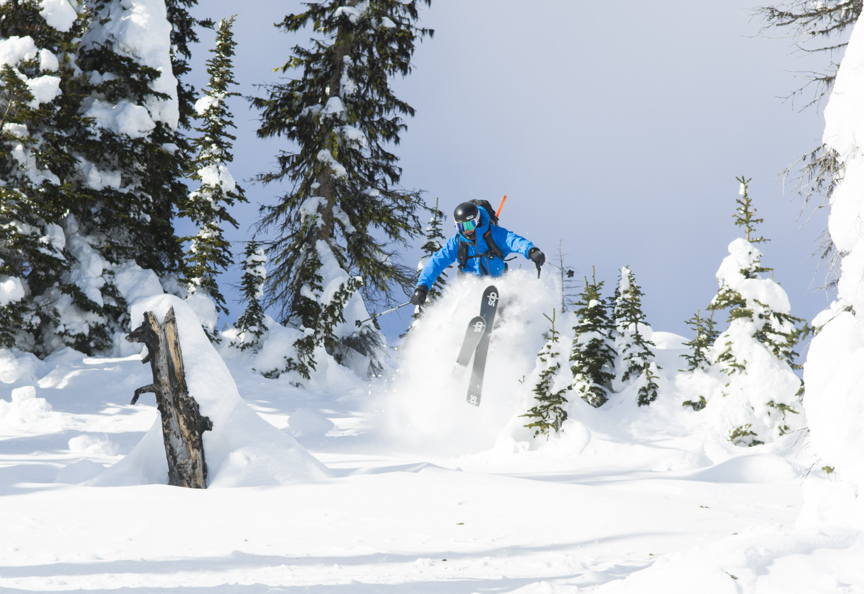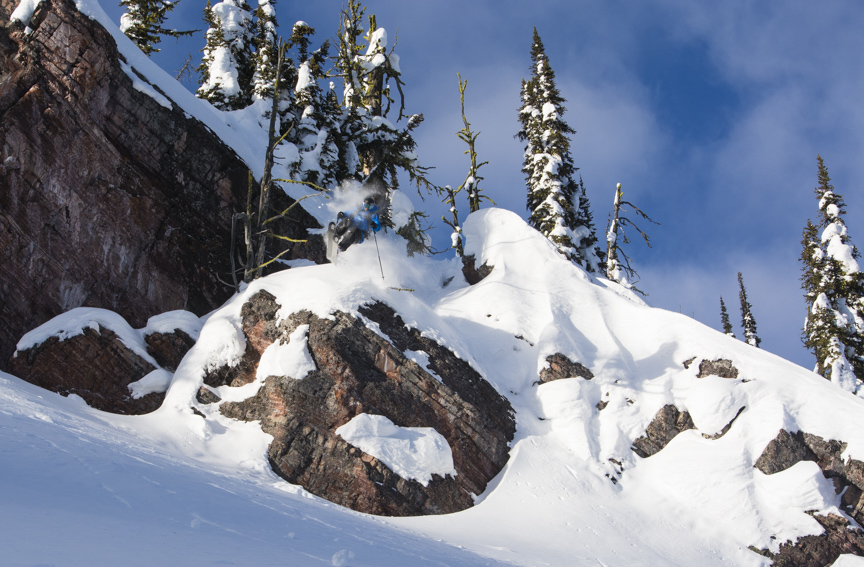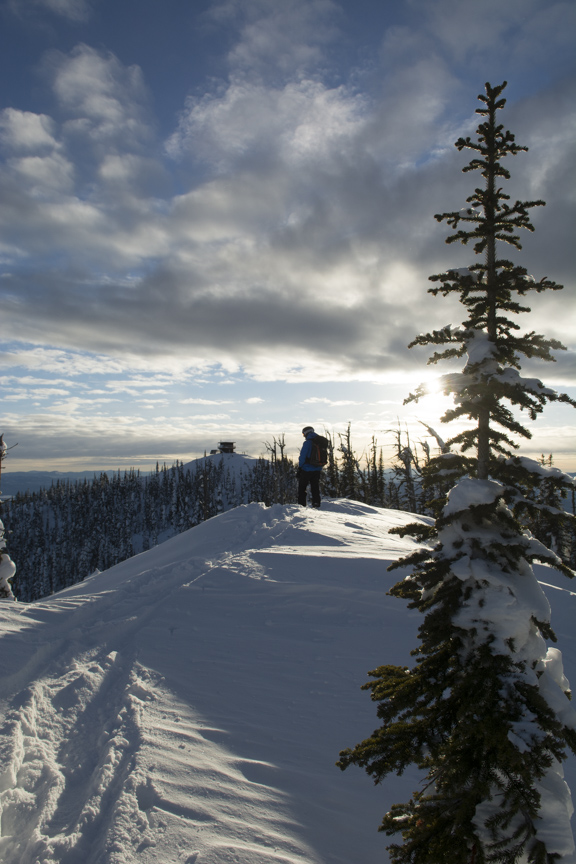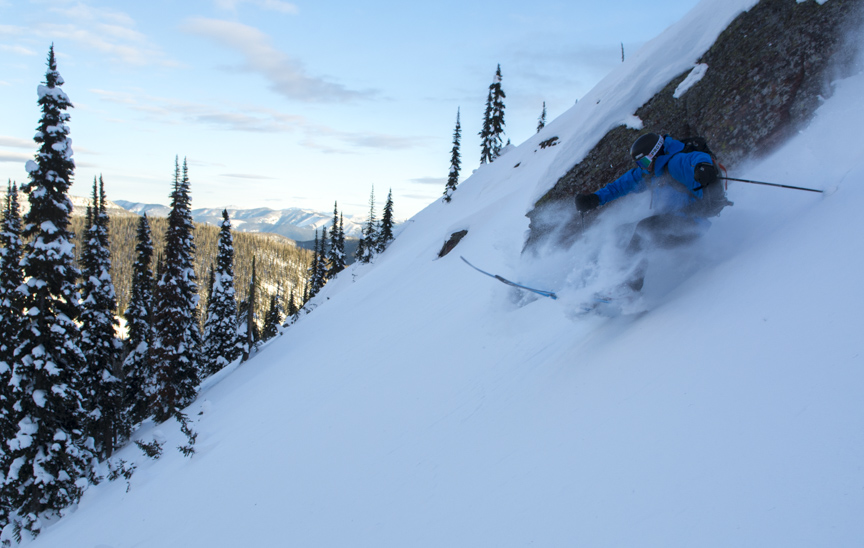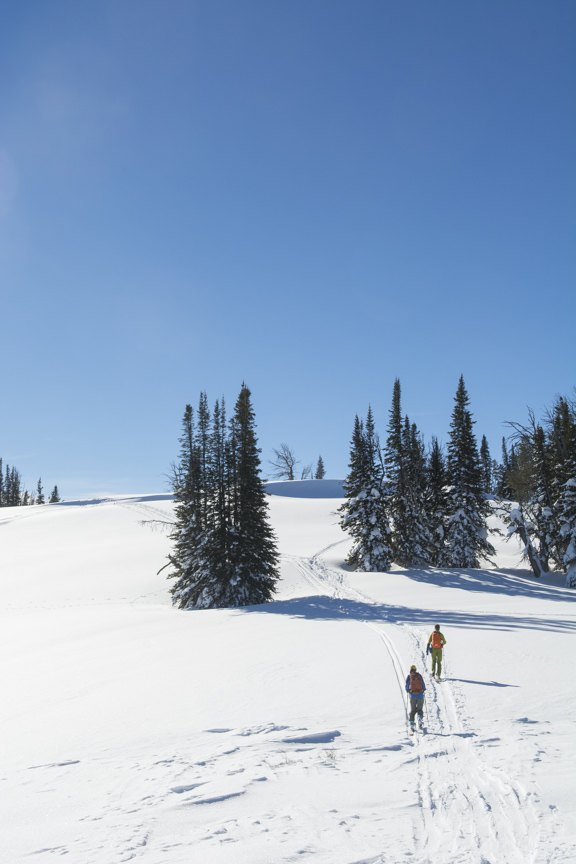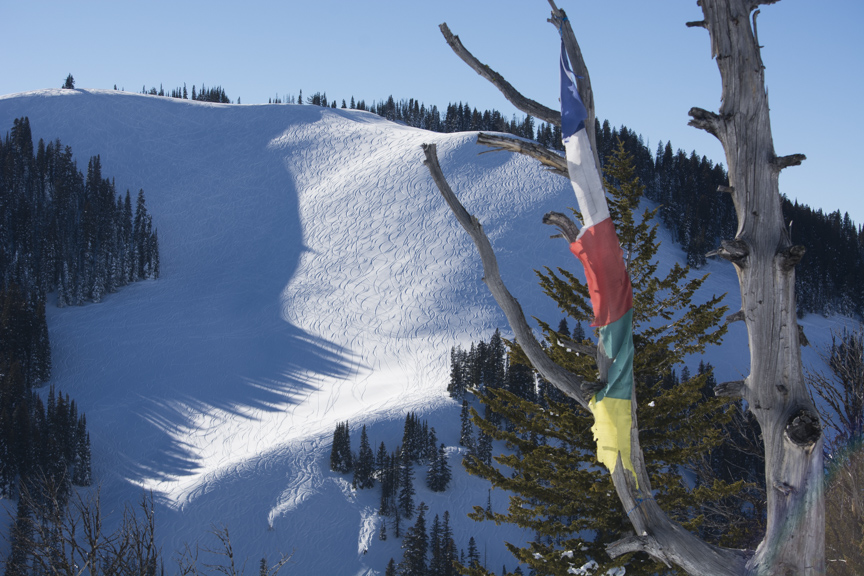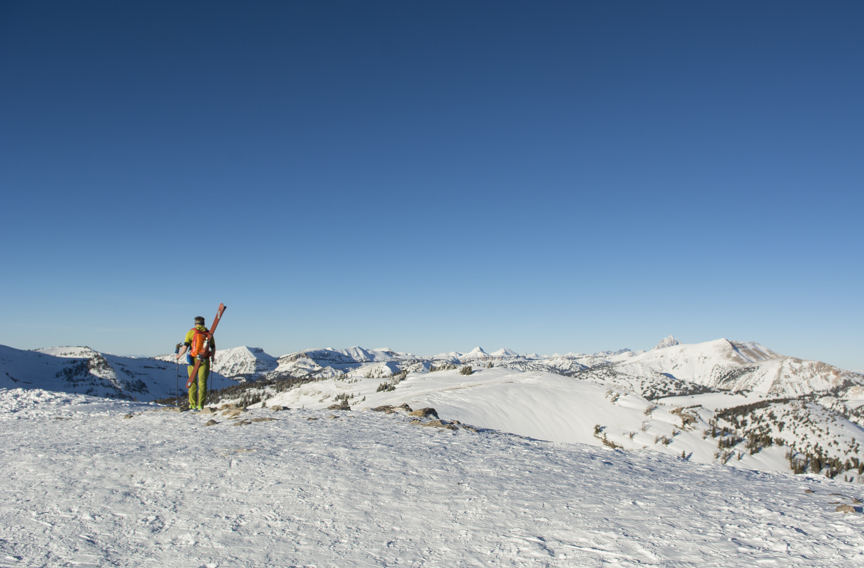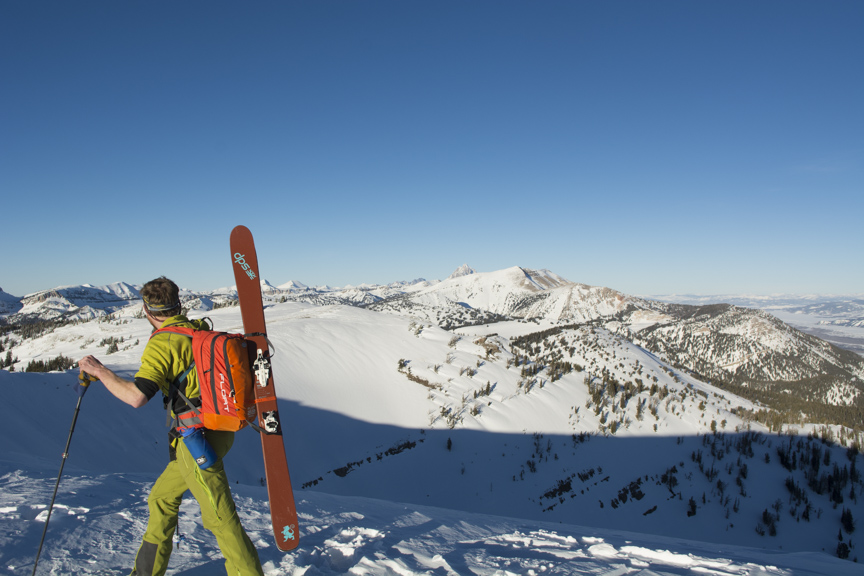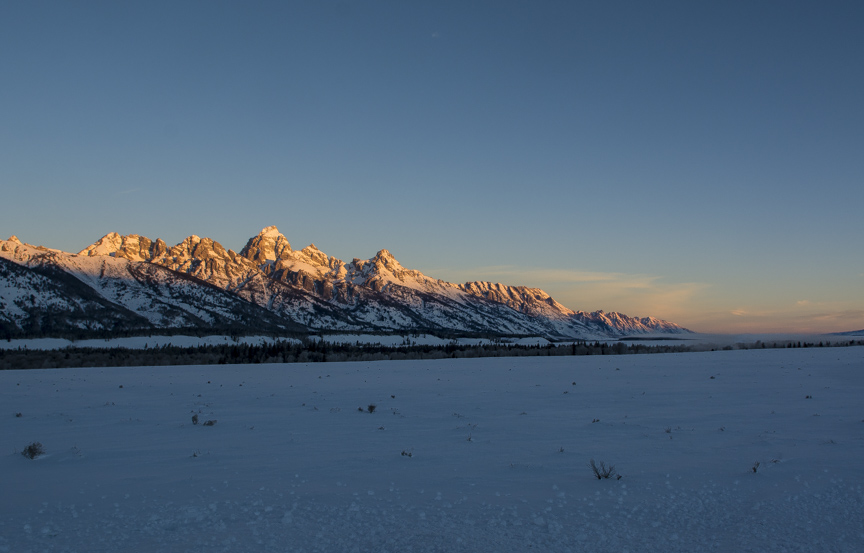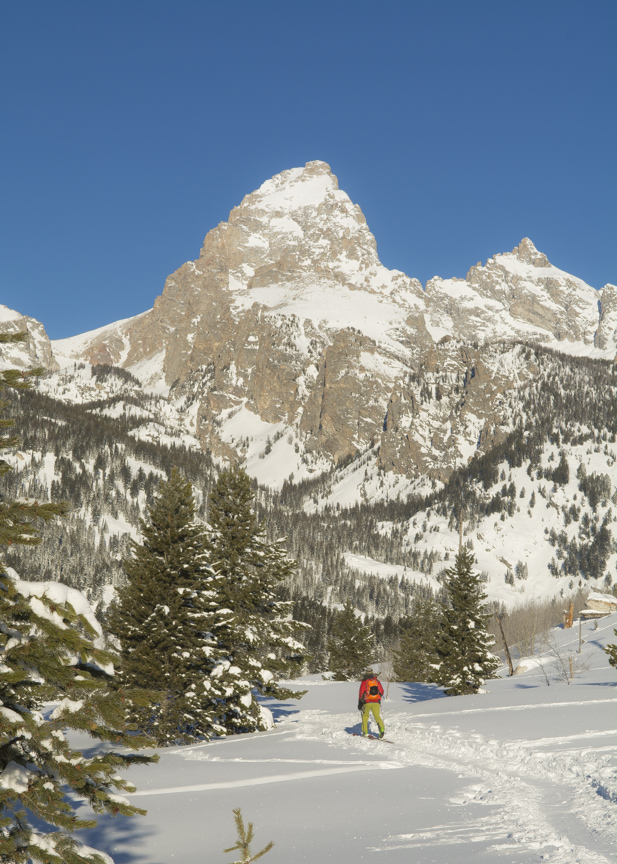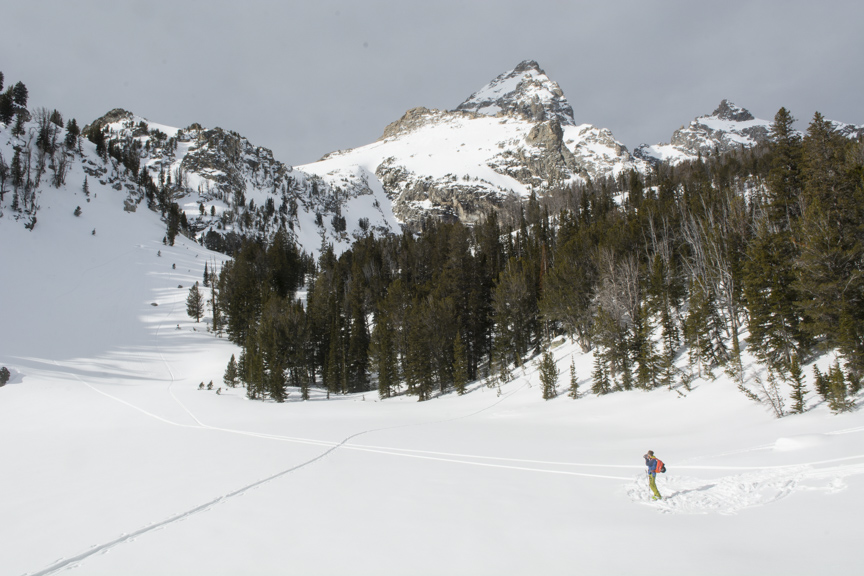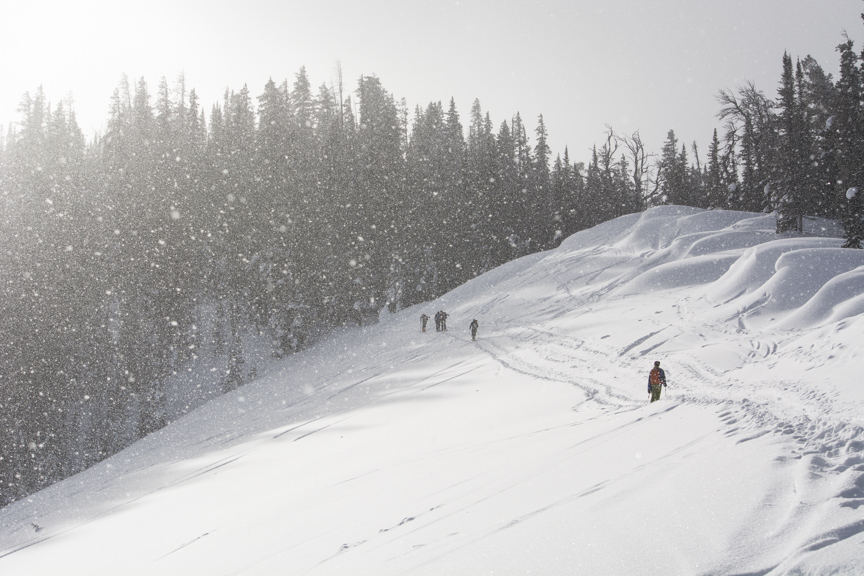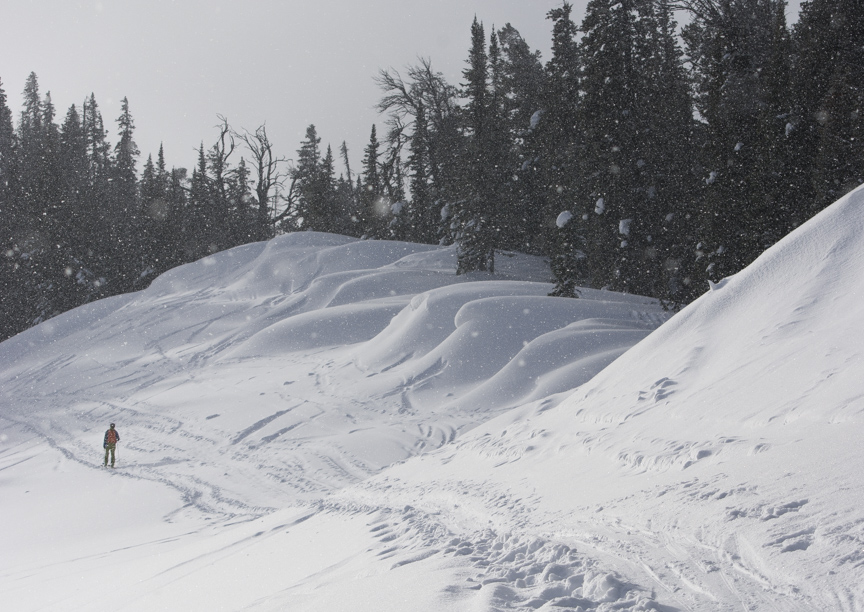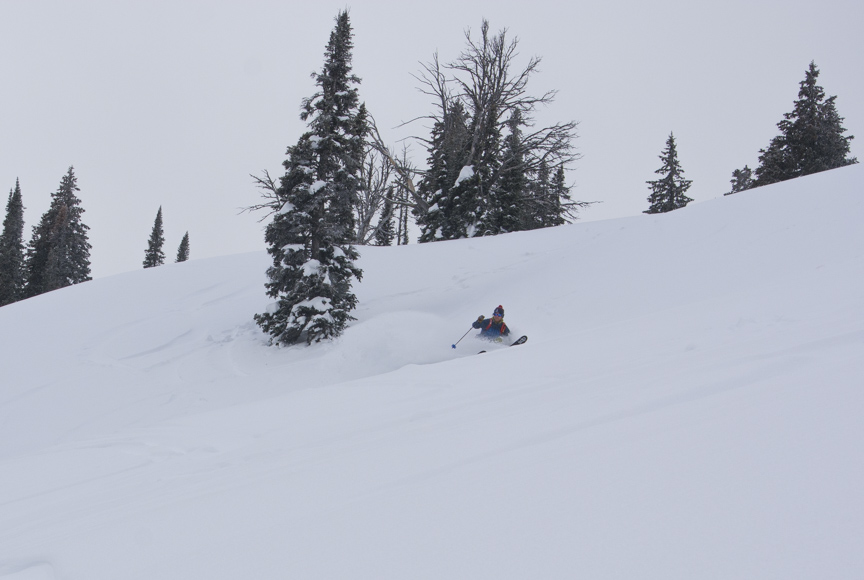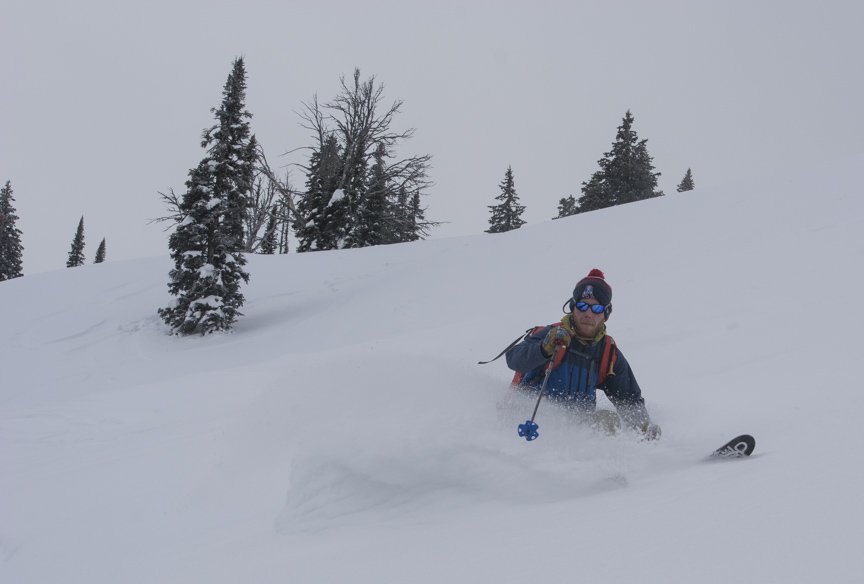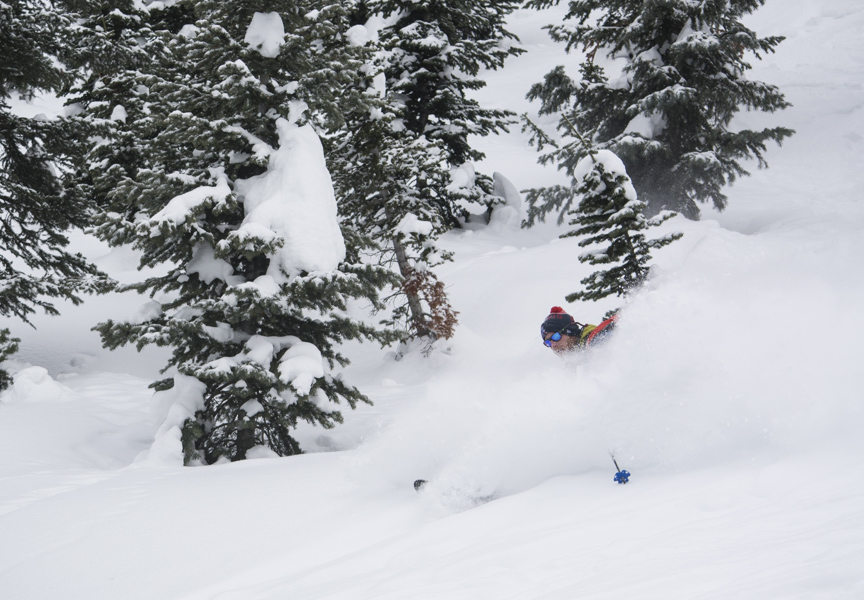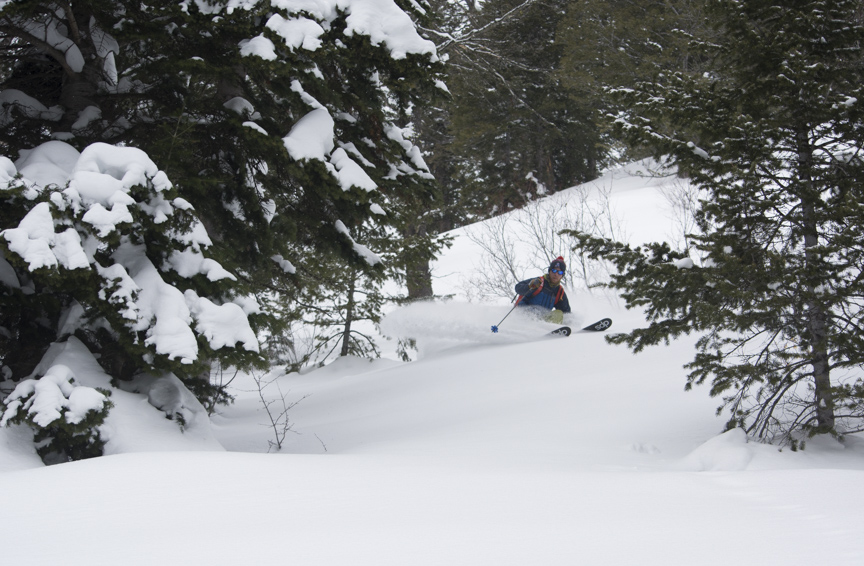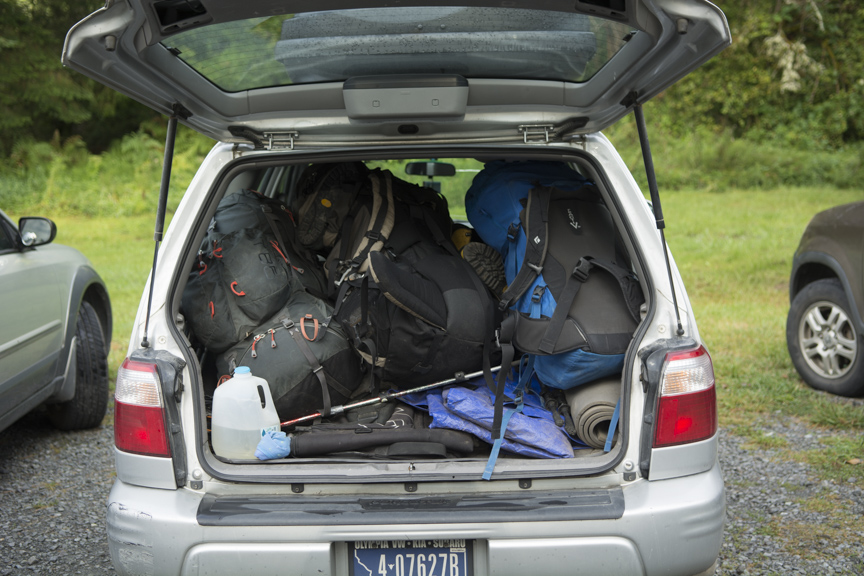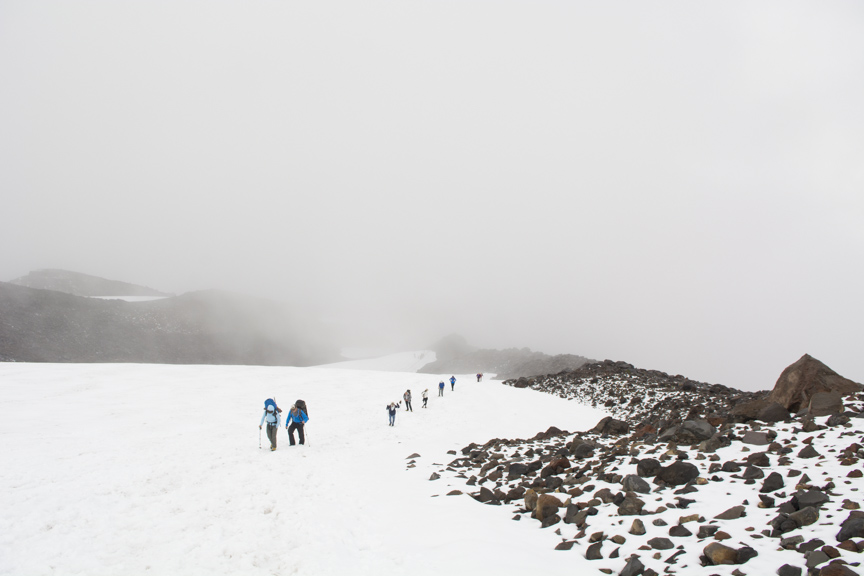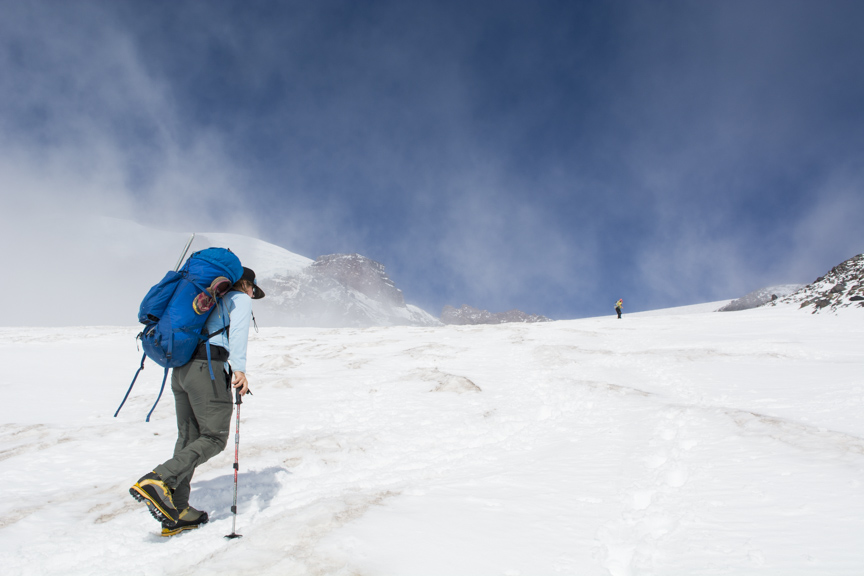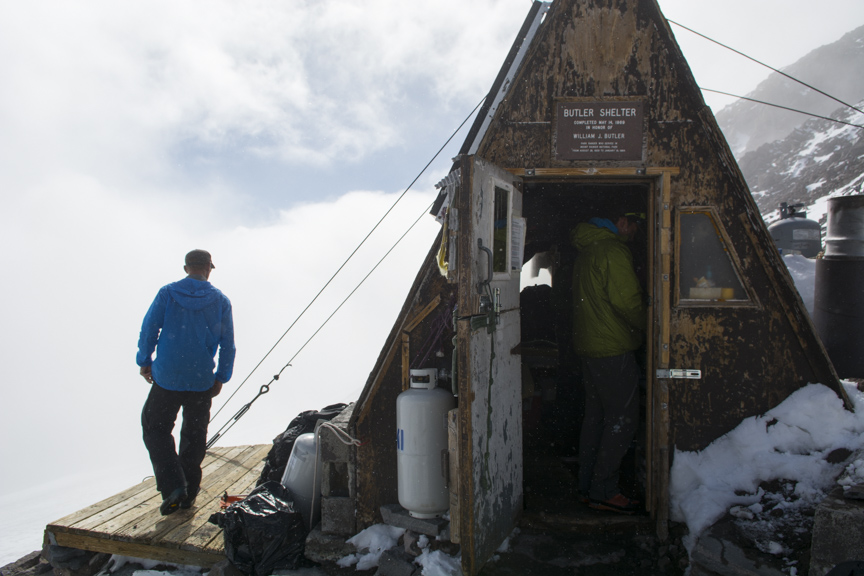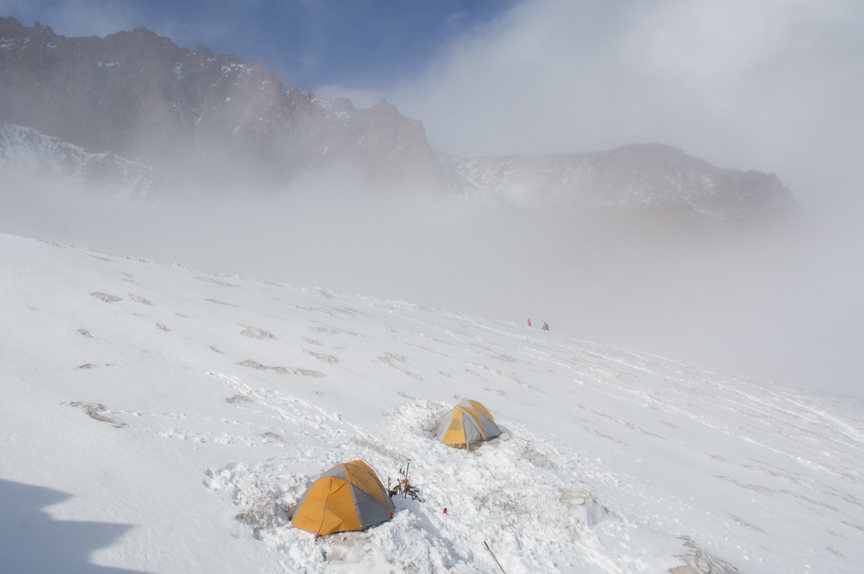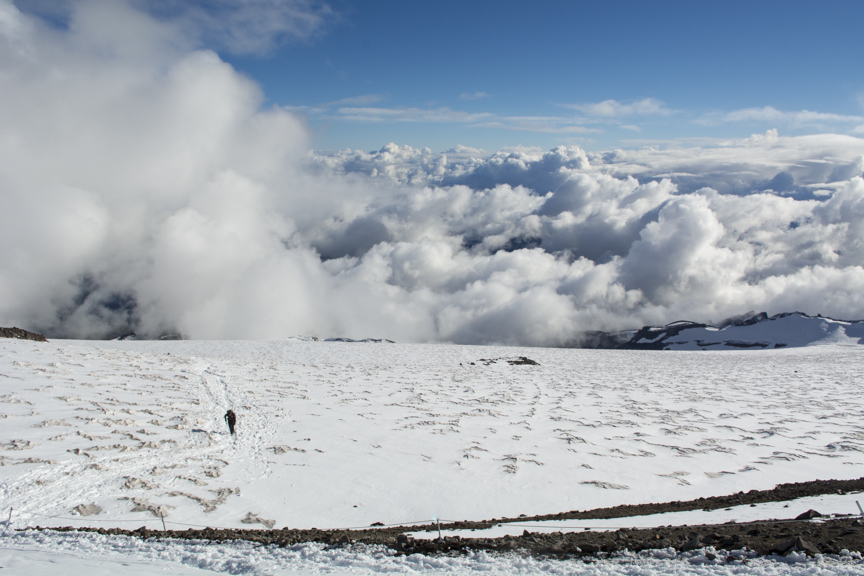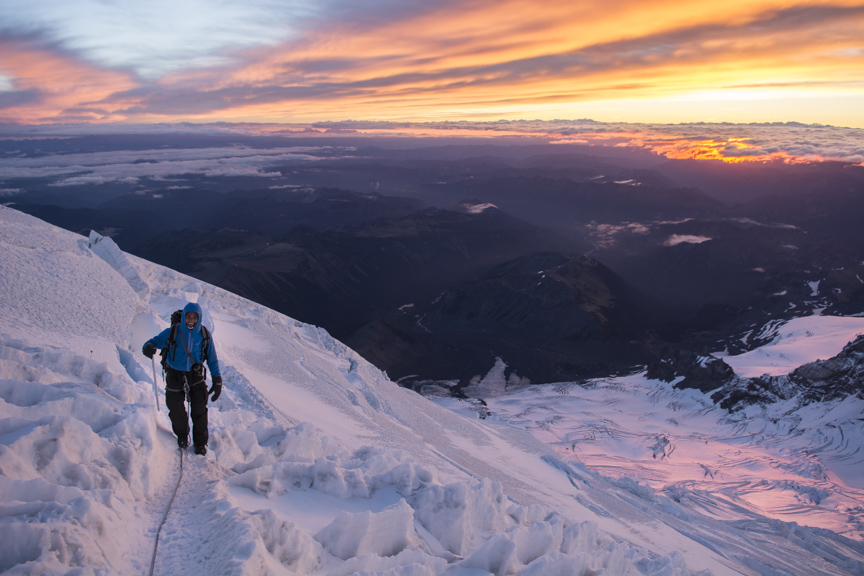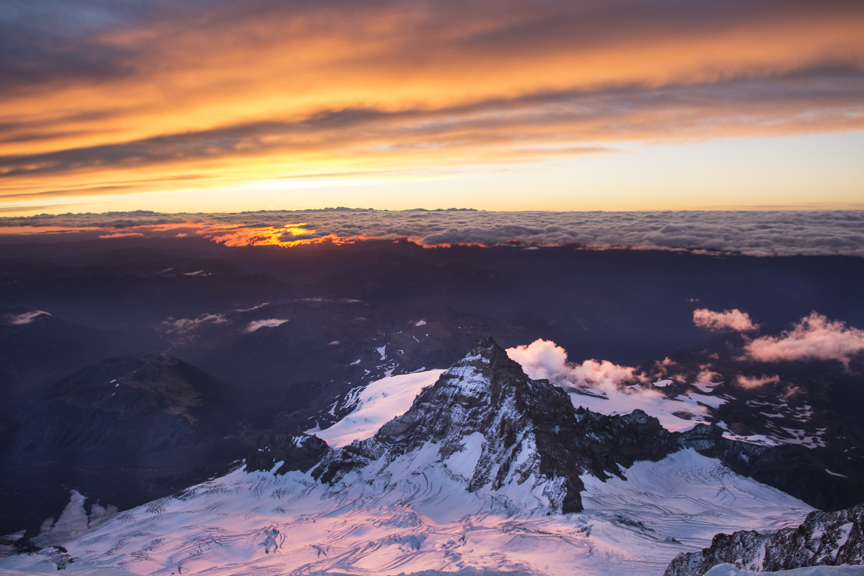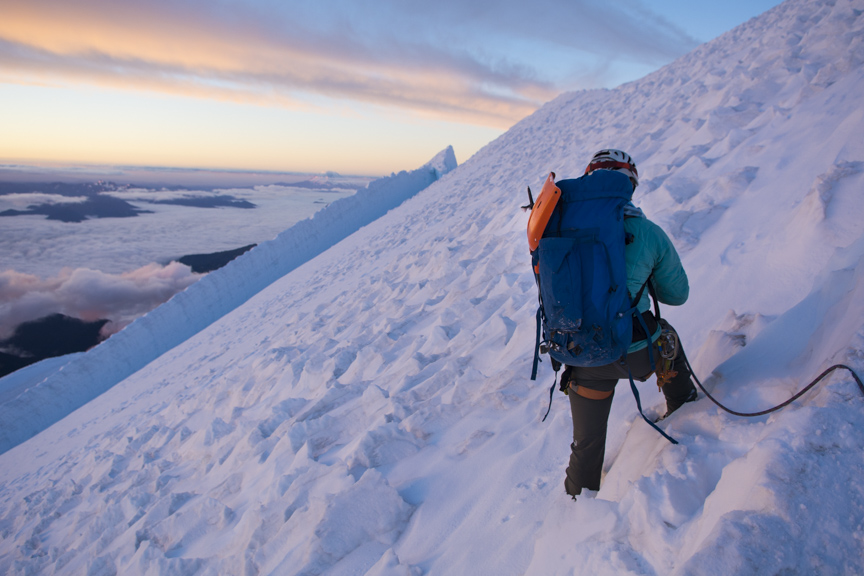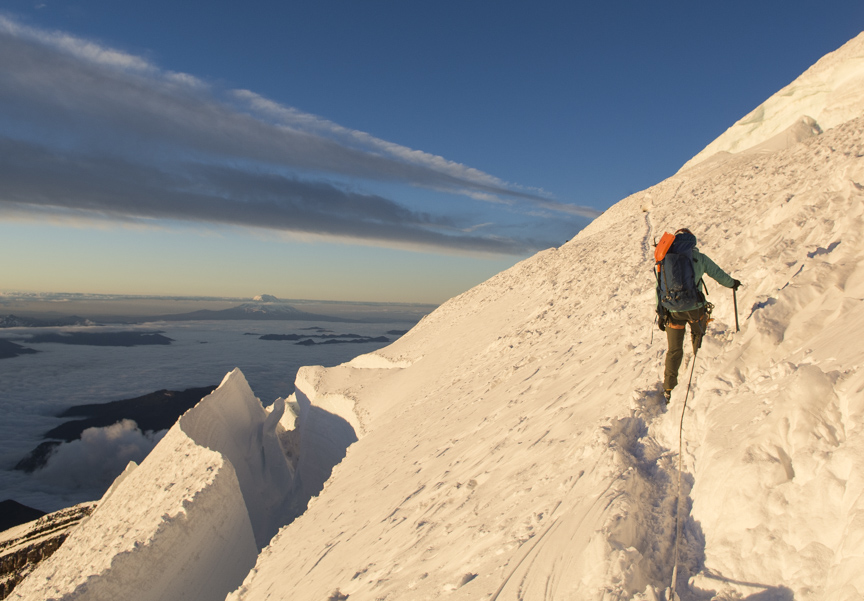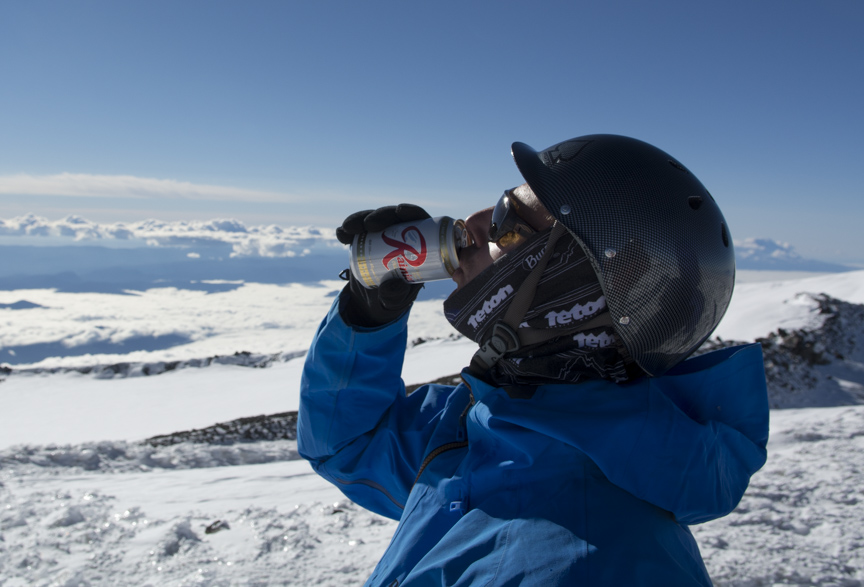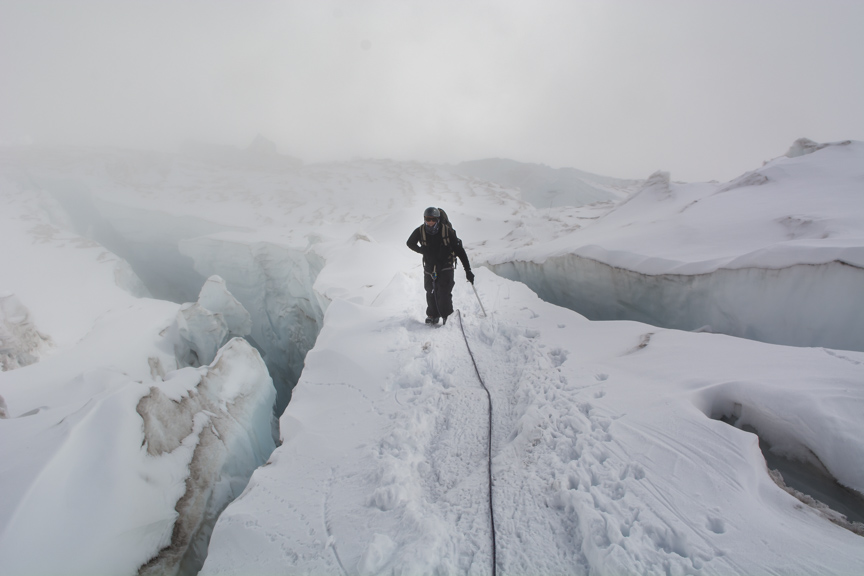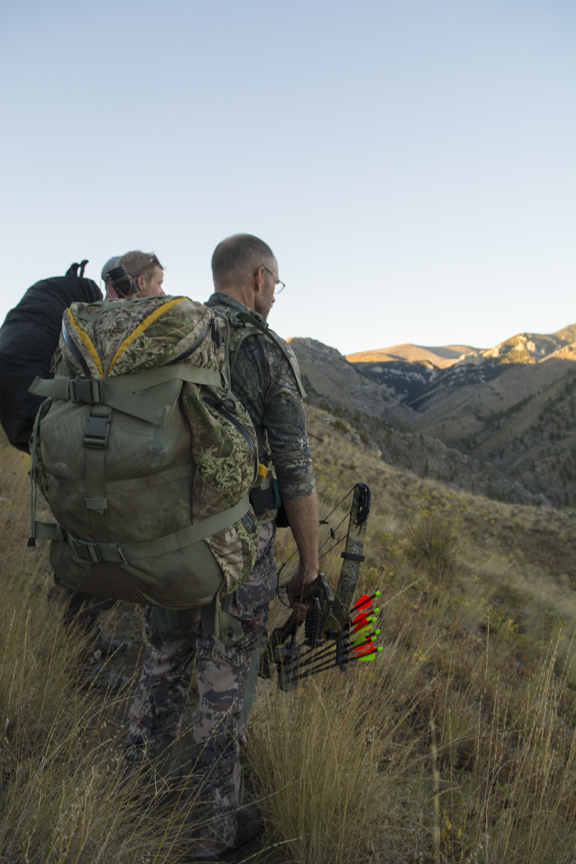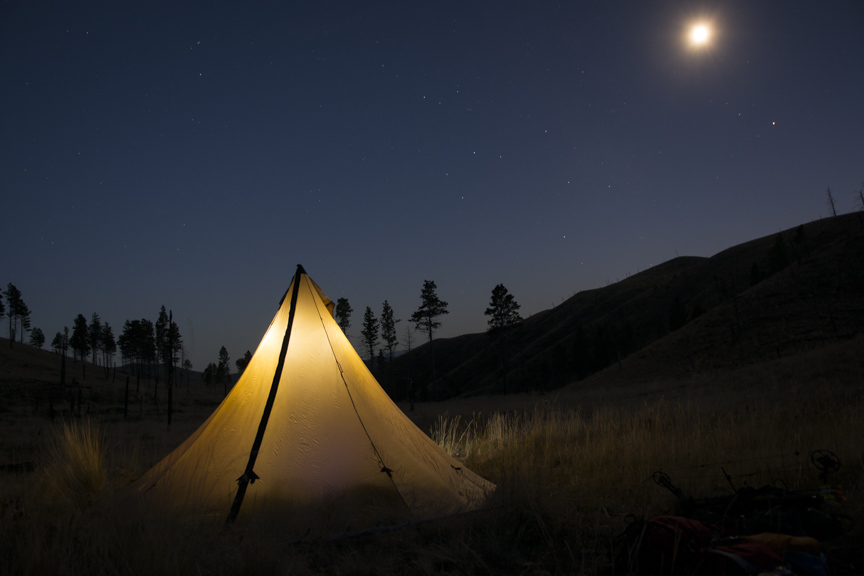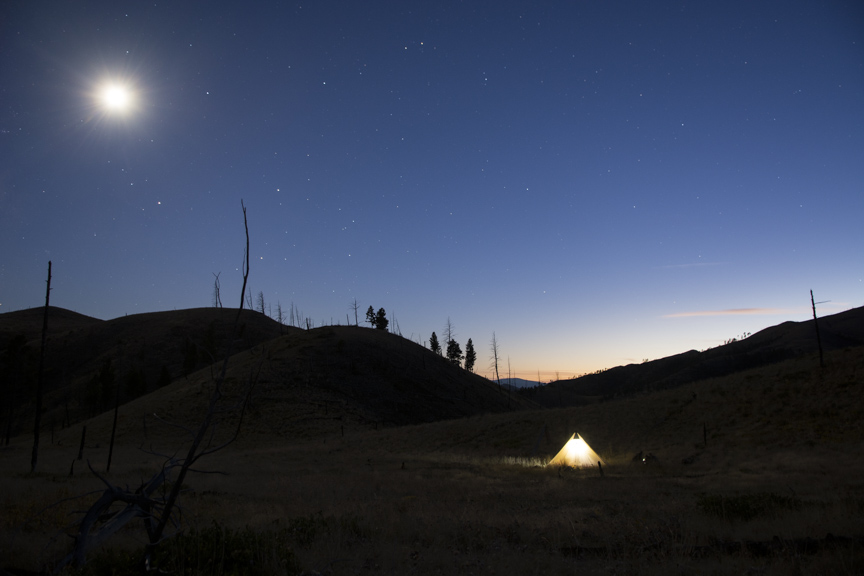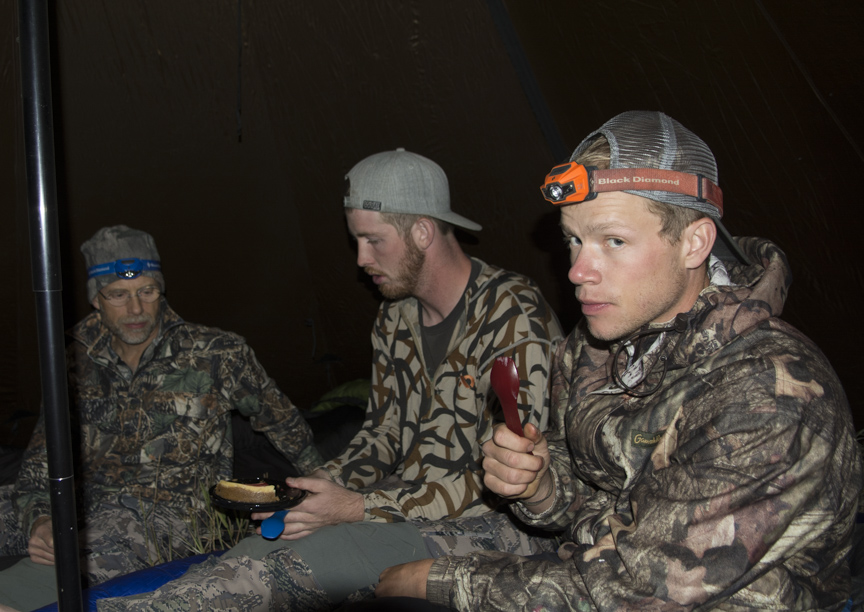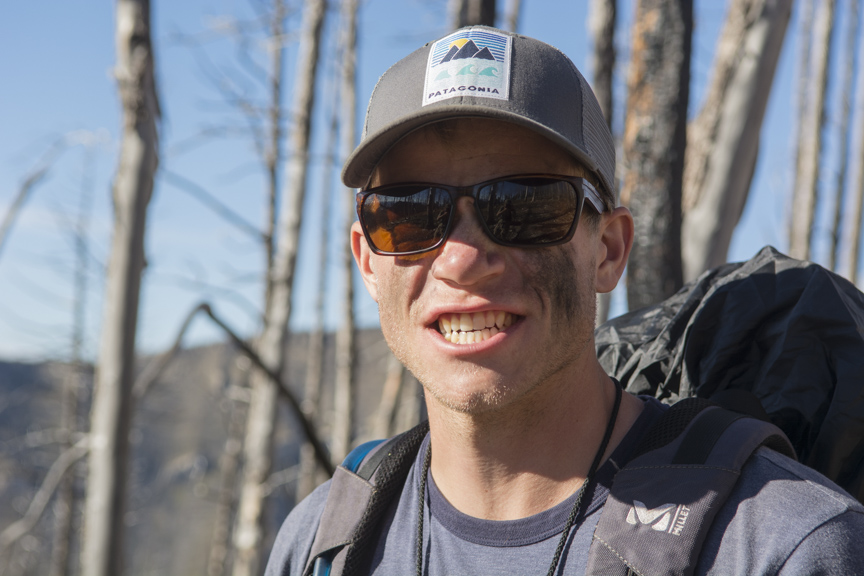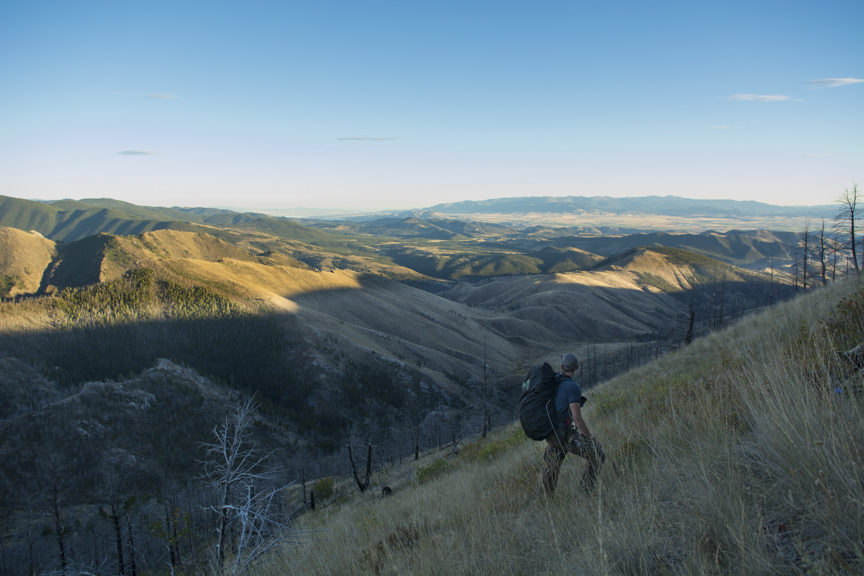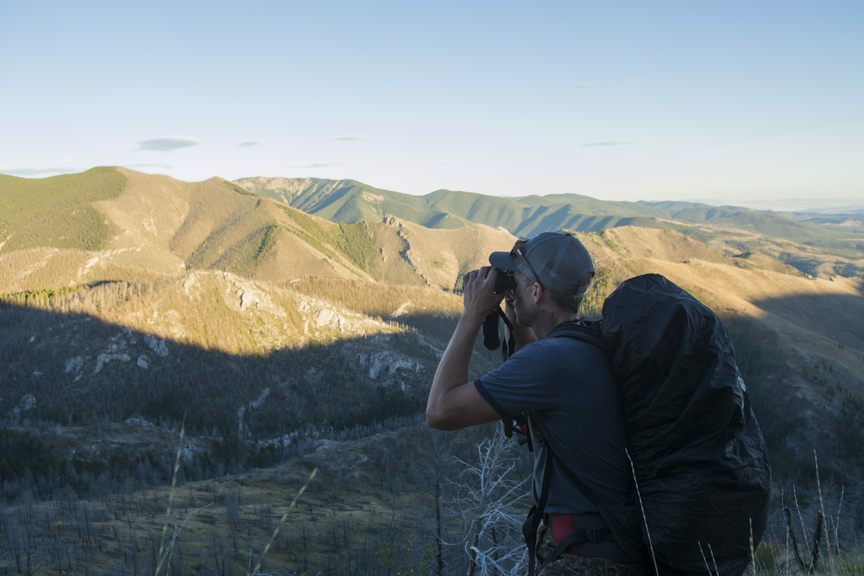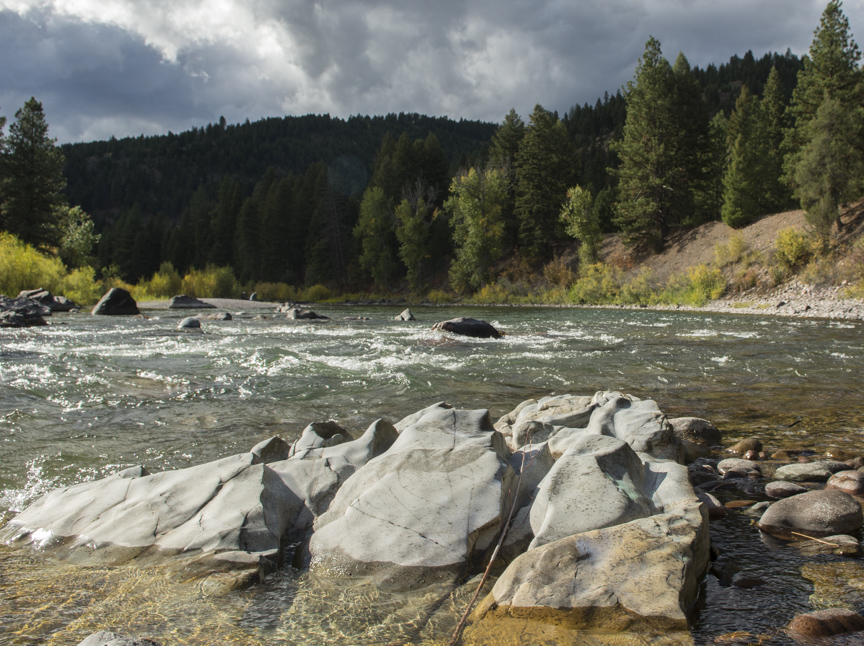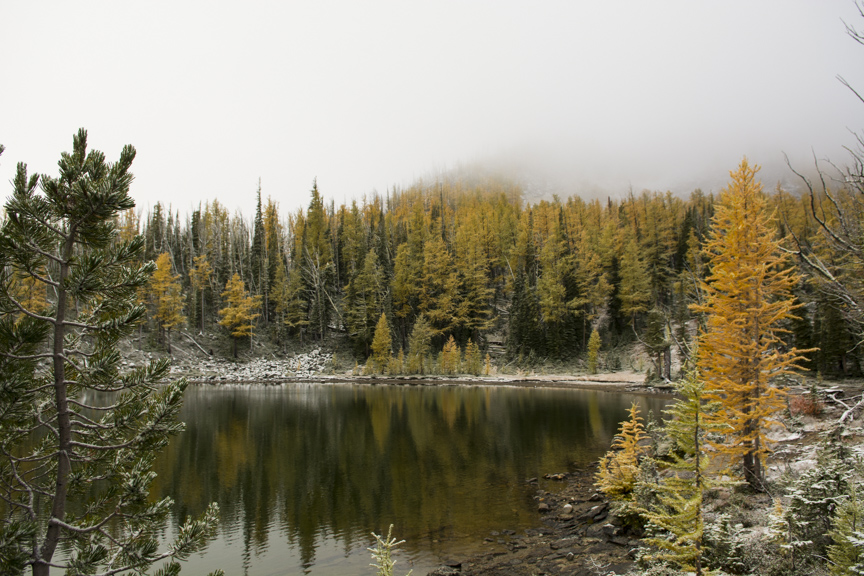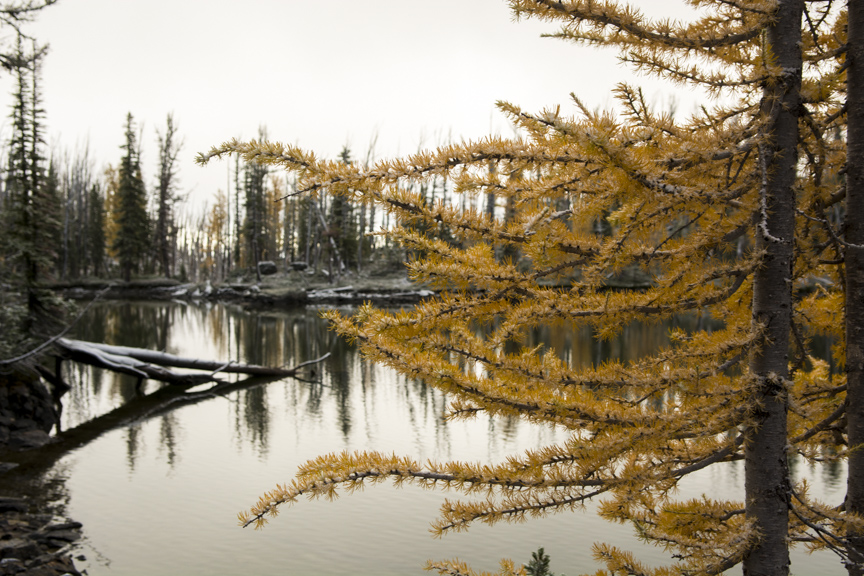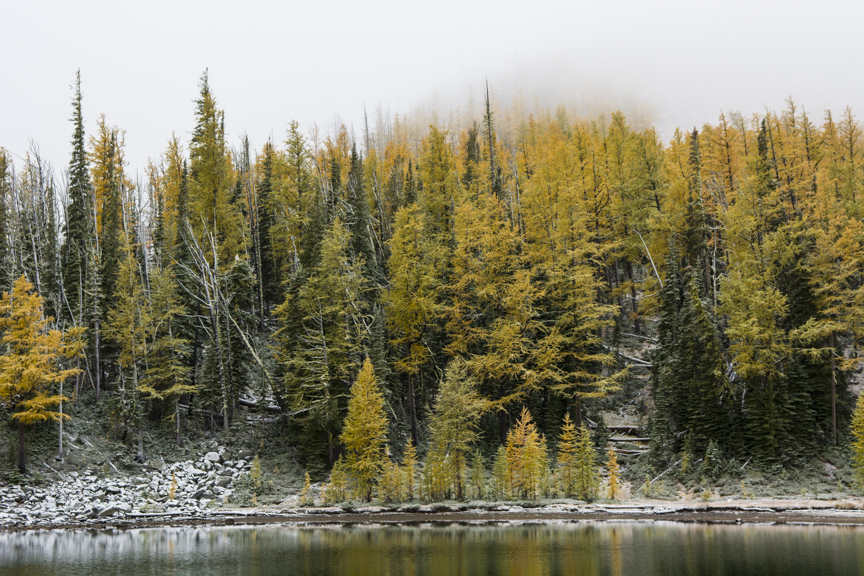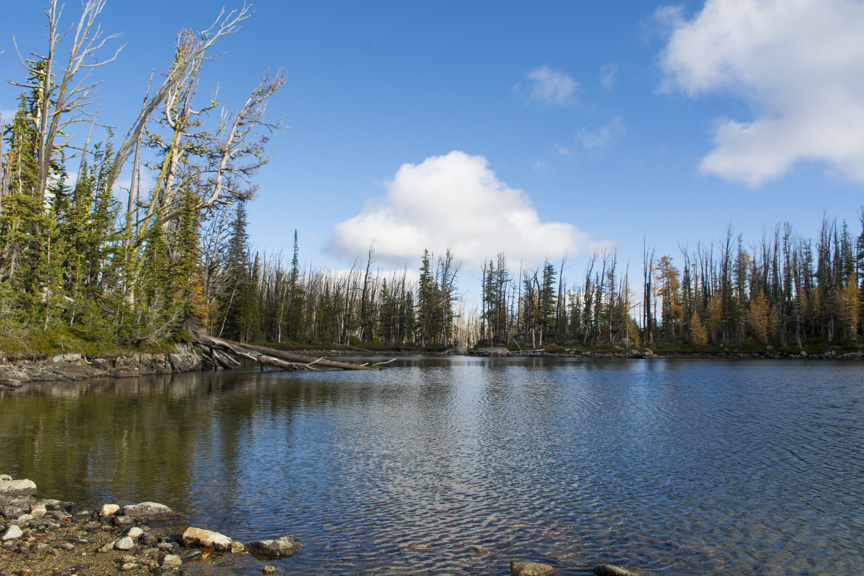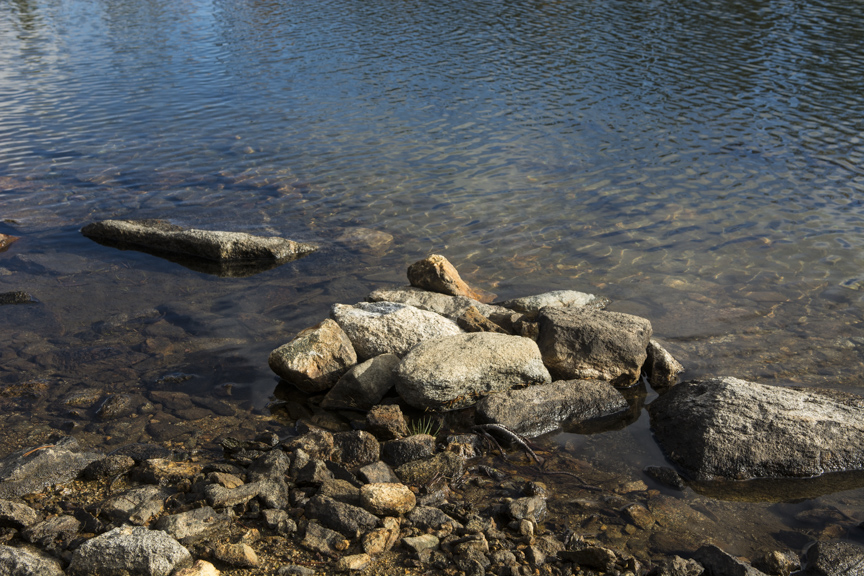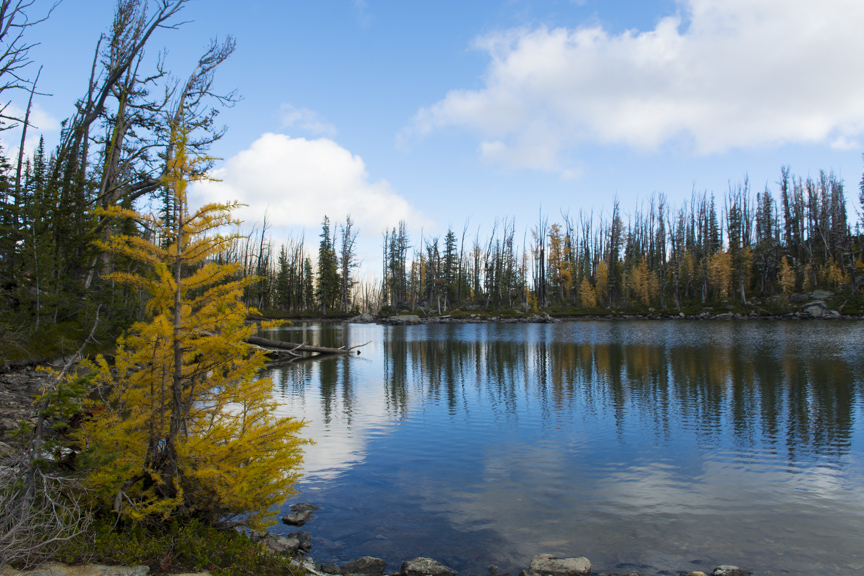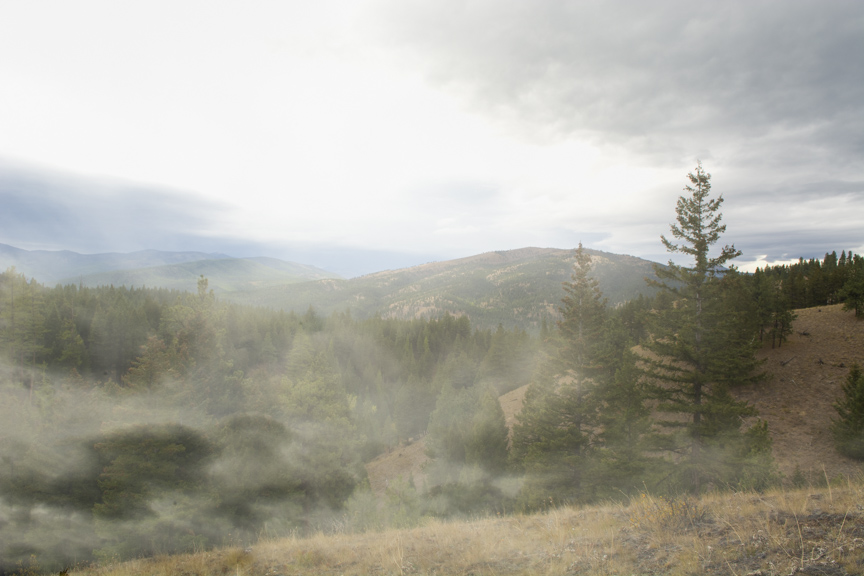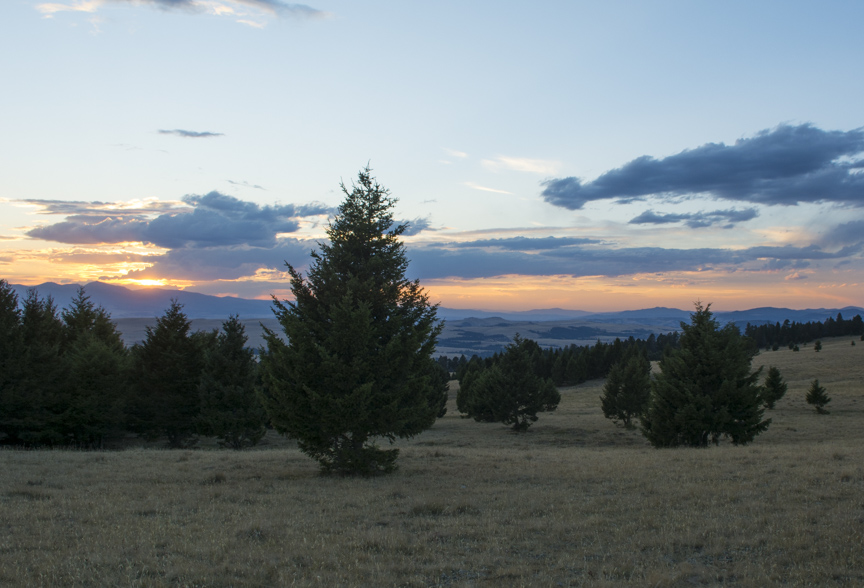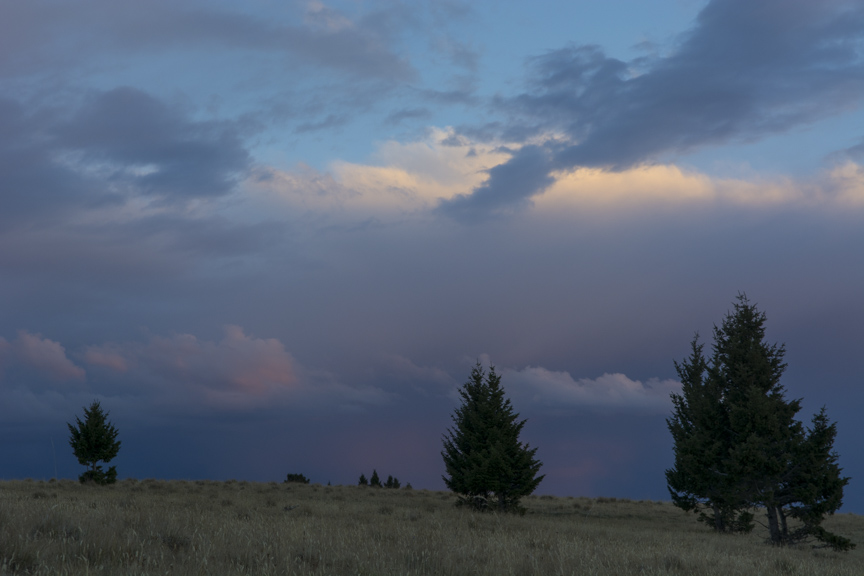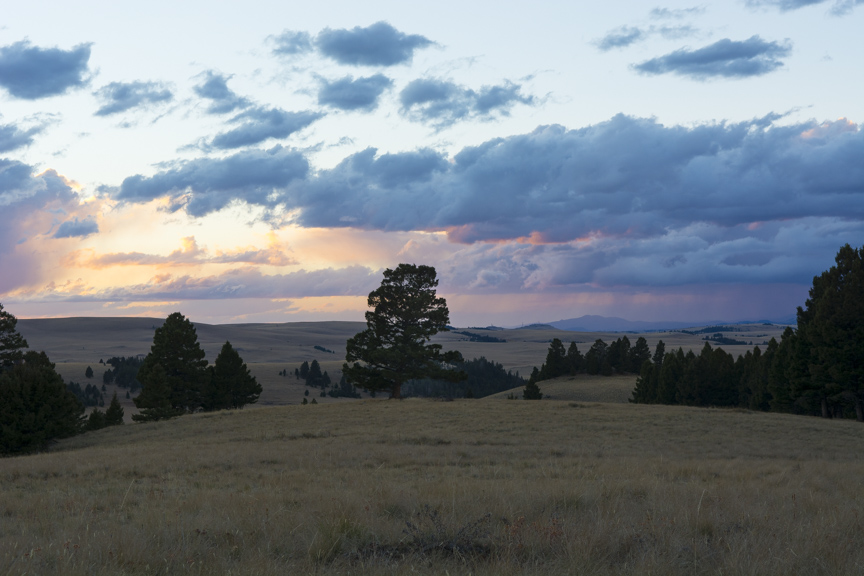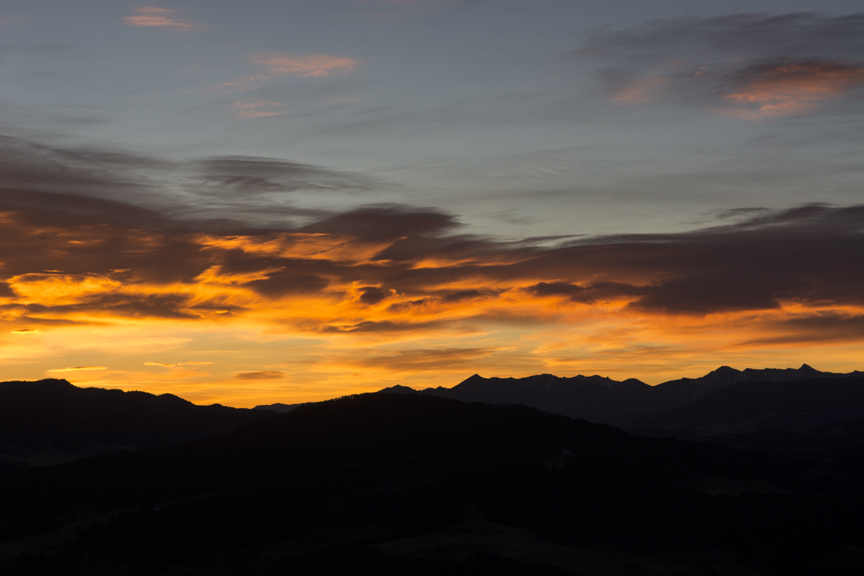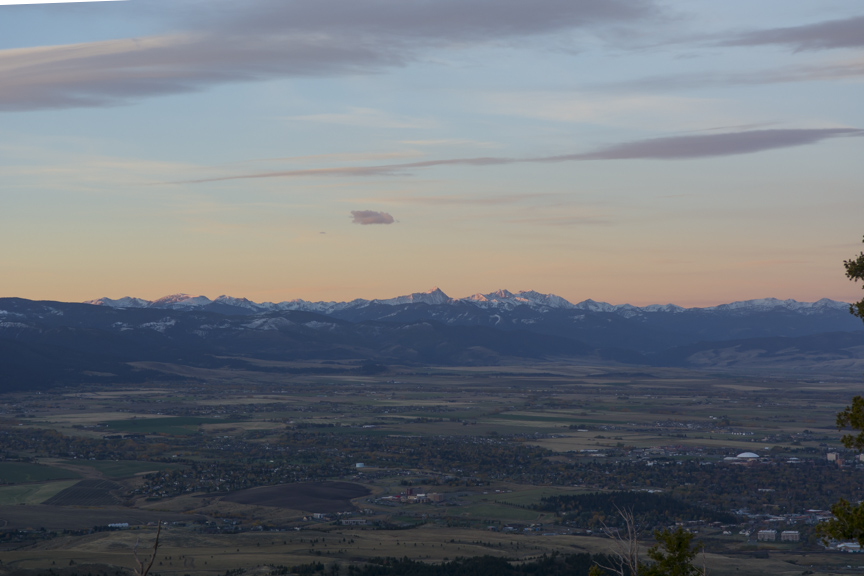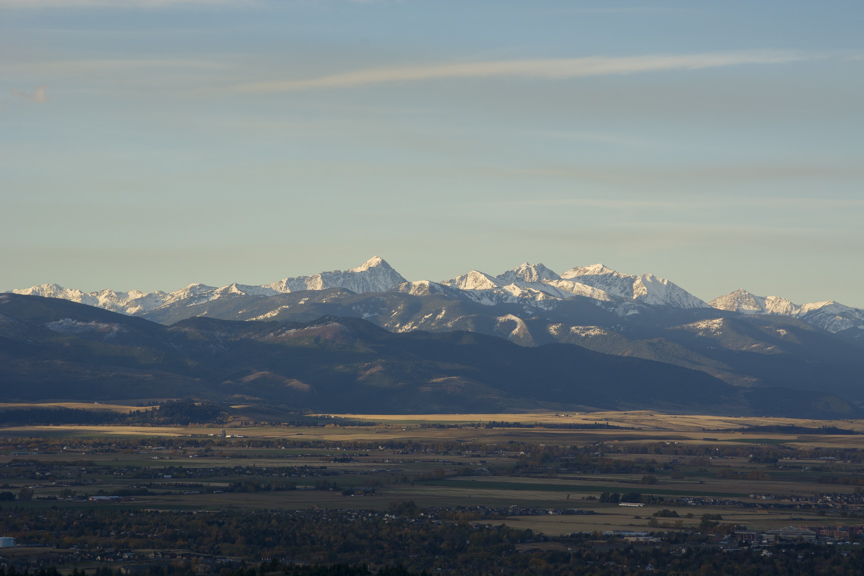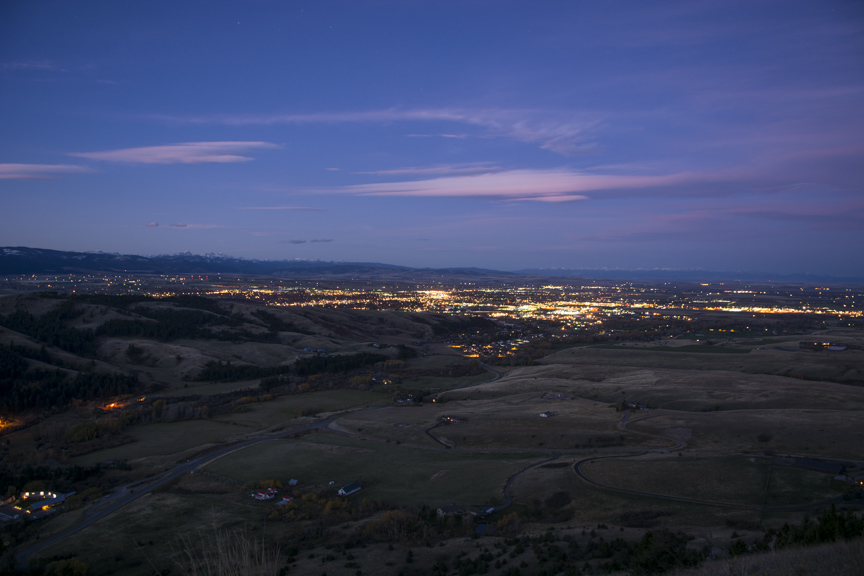True character is brought out in the gravest of circumstances, the ones where you don’t have time to let outside influences affect your actions. Ones that bring your waking, breathing, heart-pumping existence to the brink of uncertainty. When you’re at the edge, you don’t have the luxury of choosing how to act to appease others, it is simply instinctual. On the verge of mortality, when the prospects of afterlife seem just as real as the surroundings of your present moment, the ego is stripped entirely. All that remains is character in its purest form.
My girlfriend, Ashley, and I have shared countless outdoor voyages together. We’ve traveled remotely on three continents, summiting lofty volcanoes, skiing deep powder, and bushwhacking for endless hours in the rain. This past year, two weeks into a month-long pack rafting expedition through southern Chile, we found ourselves amidst our biggest misadventure yet, our true character bleeding out in both disconcerting and admirable ways.
On New Year’s Eve we wake to the titter tatter of a light rain falling on the roof of our tent. We’re camped on the banks of Rio Chacabuco in Patagonia National Park—an area recently expanded to encompass Lago Jenimeni National Reserve, Lago Cochrane National Reserve and the privately owned Patagonia Park. Avoiding the morning drizzle we drink mate and have breakfast in bed. When the rain stops around 9:30, we load the boats and set off down the river.
The first few hours pass as seamlessly as the current. The river’s shallow depth and meandering banks allow us the perfect combination of relaxed attentiveness. We’re engaged with our direction but the slow riffles don’t require the focus of those running the Grand Canyon. We roll over soft wave trains and paddle through flat water, aware but comfy.
The crux of the day comes about lunchtime when we reach the mouth of a Class 4 gorge. For route beta, we’d been following a single blog. Today’s description says nothing more than “it was exhilarating” and that its author had portaged the two biggest drops. Based on the fuzzy satellite imagery on our GPS it’s difficult to determine exactly how big everything is, only that the stretch of water ahead is quite long, just under a mile according to our estimates.
At this point, it’s either portage from the get go or hike to higher ground for a better vantage of the river below. We decide to take a walk. The first few hundred feet before we enter the gorge proper appear surprisingly doable. There are some rocks to avoid and some skinny lines to piece together, but the moves are well within our skillset.
But in order to see the whole run we’ll need to climb up and out of the canyon to get a viewpoint from the rim. This involves a serious bushwhack through shrubs and thorns, some of the thickest we’ve encountered thus far. There’s at least five different vegetative species in the gorge, and every one of them penetrates through my crocs and nabs at my chilly toes.
We keep passing false summits, revealing only that we’ll need to trudge further to see the entire section. We stop atop a knoll where we can see the first problem section, the first of the two drops our blogger must’ve portaged. From what we can see, the water is quick and will require some advanced moves, but it looks worthy of an attempt. Plus, there is a nice eddy right before the drop in, we figure we can pull out there and reassess the rapid from ground level. However, for us to commit to the gorge, we still need to get eyes on the second crux. It’s obvious that doing so requires another 1,000 feet of heinous bushwhacking. I can tell Ashley’s excitement is slowly being replaced with frustration from our walk. “What do you think, chica?” I ask softly. “Looks like we should be able to see the rest of it from that next ridge.” “Ok,” she sighs discouragingly. “This is a lot worse than it looked.” Her affirmation is meek, but it’s enough for me. ‘Oh how sweet this one will feel,’ I think, already daydreaming of the excitement we’ll share after running it. We continue on.
We keep on and the schwackin’ gets tougher. The thorns get thicker and the slope gets steeper. When we finally reach the vantage point we need the rapid reveals itself to be impassable for our packrafts. The one line that does show the faintest possibility is clogged with exposed rocks and raging water, if it does dump us the consequences could be higher than just a casual swim. It doesn’t take us long to decide that it’s too much for us to run.
However, before the drop is a long stretch of flat water, 300 feet or more after the previous rapid, plenty of room to pull over and portage to the lesser but equally appealing Class 3’s below. We take some more time to think it over. Is it worth it? Will everything be as recognizable from water level? Surely not but surely we’ll know where to portage
With all this thinking and mulling over the day is aging quicker than we’d like. It has taken nearly an hour and a half to scout the whole section and even with Patagonia’s forever summertime light it feels best to get a move on one way or another.
Both of us share our hesitations but have the confidence and swagger to overshadow them. We could hike the hour back and portage the whole thing but what kind of New Year’s Eve would that be? It’s decided. We’ll go for the upper section, but will portage the lower Class 4 unless on arrival something looks very different and a runnable route presents itself.
We thrash back to our rafts and eat cheese and sausage while listening to the river narrow into the gorge. I’m not sure if the cold is getting to me or the sound of the rapid is rattling my psyche but suddenly I don’t want to be upstream. When attempting “The Uncertain” risks are always at play, but if you think about them too much your conscience will clutter and your performance will suffer. We’ve spent enough time on the outskirts of this thing; if we are to do it in a healthy mindset we need to drop in quick. I gobble up the last of my cheese and hurriedly pack away my food bag. Ashley gets the hint and does the same. We kiss each other, get in the water, and start coasting into the canyon.
Running water is unique in its demand of relentless commitment. Once you decide to do something that action cannot be undone, it cannot be taken back. Unlike other adrenaline activities like skiing and mountain biking, you can’t hit the brakes if all of a sudden you don’t like what lies ahead. There is no pause button. Upon commitment there is only you and the river, working together or against each other. The decisions you make will dictate which. There is a divine beauty to this sort of unparalleled and fluid obligation. There is bone-chilling terror as well. I feel both of these emotions clashing inside me as I bob 15 ft. behind Ashley, the canyon walls narrowing in around us.
The first few bends are a leisurely Class 2/3, just enough to take the edge off and fire up some positive endorphins. The holes are small and the wave trains are playful, we’re having fun. We wind into a tightening slot and the sound of the river intensifies. Above the horizon line we can see residual water spitting violently into the air. We’ve arrived at the first problem.
Ashley gets out for a closer look while I float in the eddy above. After a solid size-up she comes back and insists I get out myself. Peering into the rapid from ground level the water looks far more ferocious than it did from atop the canyon. On the left side of the river, just below the eddy our boats are floating in, the water slides beautifully off a sphere-shaped boulder into a wash of chaotic madness. The drop is only about a foot and a half but who knows what would happen once you land. On the right side, the line we think we can run, the current runs swiftly past the drop and funnels into a tight slot between the bank and an exposed sharp rock in the middle of the river. To the left of the lower rock is a mess of unpredictable boils and hidden objects, definitely an area to avoid. It will be quick but if we paddle hard and make the right line we should be able to shoot through the funnel and into the calmer water below. We’ll have to be on our game, though, as the river’s tranquility doesn’t last for long. A couple more strokes and there is a smaller drop we’ll need to ride as well. The lower one looks more within our range however; it’s navigating the top section that has all our attention.
“Looks doable,” I say. “Paddle like hell to stay right and hang on through the pinch. Let’s do it!”
Ashley’s a bit more hesitant. “I’m just wondering if it’s even worth it,” she says under her breath.
“We got this,” I reply encouragingly but with a hiss of pressure.
Her tune changes. “Alright, let’s do it.”
My adrenaline is flowing but I feel pretty good about it. As we’ve done previously, Ashley goes first and I follow behind. From the water level I can only see 20 feet until the horizon line so I figure I’ll try to keep her in view but give her as much room as possible.
She drops in when I’m floating in the middle water between the eddy and current, trying my best to stay straight and watch how the pinch treats her. She paddles hard past the first rock and it looks like staying right should be no problem. However, when she skirts into the pocket to the right of the second rock her boat is tossed back and forth viscously. In a quick two seconds she rides the left wave, bounces high up on the right bank, and is tossed like a bowling pin into the water.
Seeing this, I give it everything I’ve got to re-catch the eddy and avoid the rapid. I point my boat to the left bank and paddle with all my might. Just when I think I might actually make it the back of my boat starts to swing downstream. For a brief moment I’m able to weigh the decision to keep paddling or not. Do I keep the foot on the gas, hope I make it and risk going over the cascade backwards, or spin around, take it head on and go for the line anyway? After a mere second of contemplation I opt for the latter and point the bow downstream.
As I float off the drop my mind is quiet. Time slows as gravity lowers me into the turbulent mess below. I land with grace and am surprised at how gently the water catches me. My focus quickly turns to the lower rock and I remain at the ready. Having watched Ashley been thrown about mercilessly I intuitively want to enter the gut at a slower pace. I put in a couple backstrokes and immediately regret them as the next thing I know my boat is pinned sideways on the boulder, water rushing on both sides of me.
There’s no way I’ll last for long in a position this precarious, but nevertheless I stay calm and try to problem solve. Before I come up with any answers the river makes a decision for me. Water fills my boat and dumps me like a swift breeze turning a leaf.
I swim the rapid underwater and pop up in the calmer section below. My paddle is still clenched in my hand, but my boat is two feet out of reach, floating upside down above me. The current has eased but the water still has a strong speed. I glimpse around and see that Ashley is walking toward the bank away from me pulling her boat behind her. She appears to be ok, though I’m not sure she realizes I’m swimming.
I let out a cry but before I can finish her name I’m taken under by the next rapid, the one we hadn’t put much thought into. I tumble around like clothes in a washing machine. My vision becomes a blur of green and white shapes. I’m not sure if I’m right side up or upside down. I’m certain it’s only a few seconds but moments like these always span an eternity. When I realize that the river might not spit me out like it did up top I think back to advice Ashley once gave me when in a position like this.
“Make a starfish!” she had said, spreading her arms and legs out wide as if starting jumping jacks. Curling up into a ball, I decide to try her tactic and launch my limbs out, full starfish style. As I do I feel the current catch my outstretched extremities and suddenly I’m spun around again and rise to the surface.
The small eddy I’ve popped up in starts to bring me back again, seemingly for another round. Lucky for me there’s a rock close by and I’m able to pull myself ashore. As I’m climbing out of the hole Ashley’s face appears as she lunges over the rock. “Oh my God, you’re ok!” she cries. I respond between gasping breaths. “My boat,” is all I’m able to mutter as residual water spills out of my nose.
Without missing a beat, she whirls around and speeds back toward her raft, and just like that she’s back in the water racing downstream. After she disappears around the corner I realize my paddle is also gone, along with my sunglasses and one of the crocs I was wearing. The gravity of the situation starts to set in.
Ashley disappears around the corner to the smaller rapids, the stretch of flat water and the crux rapid, the one we’d pledged to portage. If my boat makes it there before Ashley catches up to it I can more or less assume it’s gone indefinitely, along with everything in it. I take off after her down the canyon, traversing loose dirt and crumbly rock while the dark cloud of hypotheticals begins weighing heavily on my mind.
I can’t help but think of the worse case scenarios. Assuming my boat is gone I try for a moment to be thankful for my life. It works, but only for a moment. Indeed it’s true that the most important thing is that I am alive, things could be worse. But then I remember that we are miles from the nearest remote road and my passport, wallet, phone, tent, food, and DSLR camera are probably zooming through the rapid of no return and will likely never be seen by me again. Not to mention my girlfriend, who courageously took off in pursuit of my things. Was she all right? There’s no way she would try to run the rapid if she didn’t catch the boat in time. Or would she? Certainly she must have a lot of adrenaline flowing and people do crazy things on adrenaline. There’s no way though, she won’t make it if she does try. And then what will this mess look like?
The next ten minutes are some of the longest and darkest of my life. Shoeless, I continue to slowly piece my way through the gorge. Around the first corner I find my paddle washed up on a rock, broken in half. I use the two pieces as walking sticks to help me keep balanced on the unstable shale. The only vegetation scattered along the cliff is thorn patches. The wall’s sheerness forces me to go higher and climb over and through the shrubs. Their vines shoot through the holes of my one croc and penetrate my toes; I’ve got a dozen nasty slivers at least. The foot without a shoe has plenty more.
Pretty soon the terrain is too steep to cross. I’m already 100 ft. above the river and if I go any higher I’m not sure I’ll be able to get back down. Unsure of what to do I call out Ashley’s name. To my relieving surprise she responds immediately. Within minutes, after scrambling up a tricky chimney she comes into view. I edge my way over to her trying not to look down or entertain the fact that if a rock blows or my footing slips I’ll be falling 80 ft. into the river or onto its banks.
When I reach her I can see over her shoulder the two boats beached on the left bank, just before the precipice of the drop. She informs me she made the rescue at the very last minute with some impressive back paddling that she can’t begin to describe. We embrace and hold each other while catching our breath. I’m euphorically grateful. The cloud of worse case scenarios vanishes and I feel lighter without the weight of my dark thoughts. Both of us are shaken up, but it’s obvious that it could’ve been worse.
Hindsight is always 20/20, but with experiences like this retrospect has plenty to offer. A lot of things were done wrong or could’ve been improved with our decision-making. Looking back, we should’ve communicated better, both on the scouting mission and while analyzing the rapid from the water. Getting a view ahead of time was a challenging task and I let that weigh on my vote whether to run it or not, a mistake no smart boater should ever make. It was clear Ashley’s reluctance about the water was nothing to ignore. We should’ve listened to the hesitation in her voice when she asked if it was worth it or not. I could’ve given her more space to express her judgment and she could’ve been firmer with her feelings. We also probably should’ve run the rapid one at a time or portaged it all together.
We should’ve done these things and we didn’t. Looking back these things are clear and I’m disappointed we didn’t recognize it at the time and correct them accordingly. But on the flip side, and because we didn’t, we now have an experience to pull from for next time, a misadventure of chaotic proportions. One that stretches minutes into years and fear into gratitude, one that makes your heart thump inside your throat and your mind battle with the throes of uncertainty—an event that brings out true character, the good and the bad.
Hunter S. Thompson said that the only ones who truly know the edge are those that have crossed over and have not come back. A seemingly impenetrable threshold that’s appealing because the closer you get the more eternal you become, the more you conquer time. And though this harrowing hiccup was not part of the plan, its experience and wisdom has given both of us a glimpse into the infinite. An experience that ripped us of our ego and left us stranded on the banks of Rio Chacabuco, with nothing but our true character to help get us out.

